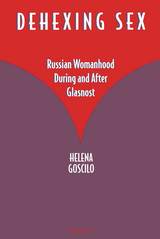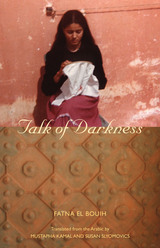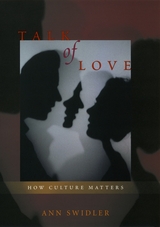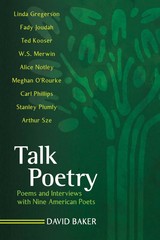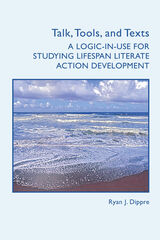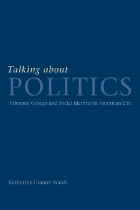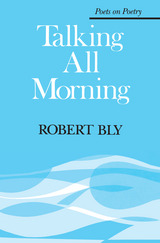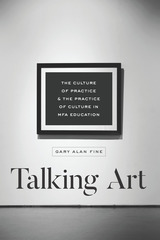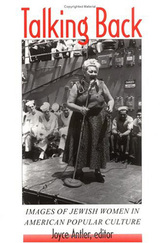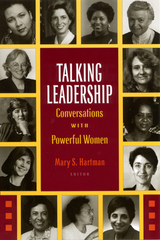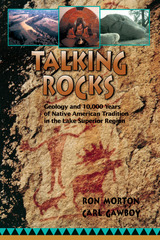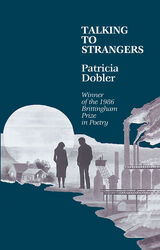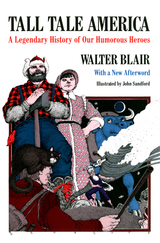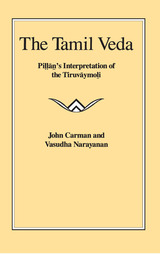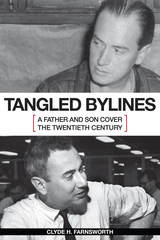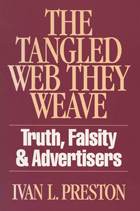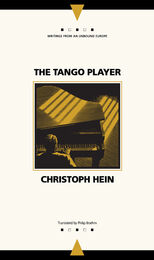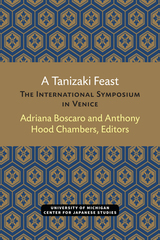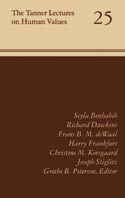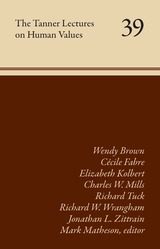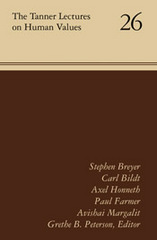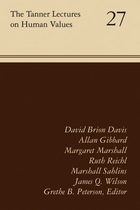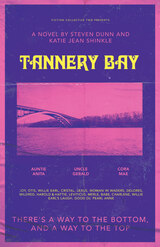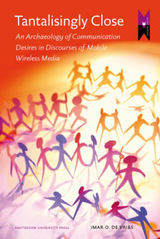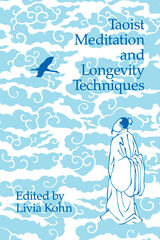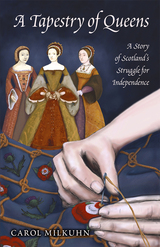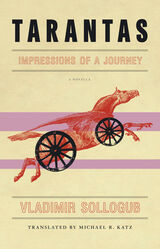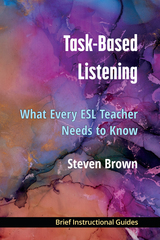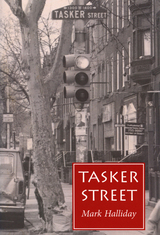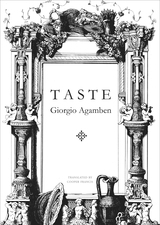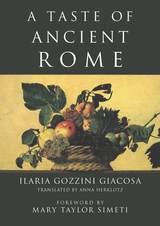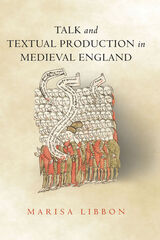 Talk and Textual Production in Medieval England
Marisa Libbon
Ohio State University Press, 2021 People in medieval England talked, and yet we seldom talk or write about their talk. People conversed not within literary texts, but in the world in which those texts were composed and copied. The absence of such talk from our record of the medieval past is strange. Its absence from our formulation of medieval literary history is stranger still. In Talk and Textual Production in Medieval England, Marisa Libbon argues that talk among medieval England’s public, especially talk about history and identity, was essential to the production of texts and was a fundamental part of the transmission and reception of literature. Examining Richard I’s life as an exemplary subject of medieval England’s class-crossing talk about the past, Libbon advances a theory of how talk circulates history, identity, and cultural memory over time. By identifying sites of local talk about England's past, from law courts to palace chambers, and tracing rumors about Richard that circulated during his life and long after his death, Libbon offers a literary history of Richard that accounts for the spaces between and around extant manuscript copies of Middle English romances like Richard Coeur de Lion, insular and Continental chronicles, and chansons de geste with figures such as Charlemagne and Roland. These spaces, usually dismissed as silent, tell us about the processes of writing and reading and illuminate the intangible daily life in which textual production occurred. In revealing the pressures that talk about the past exerted on textual production, this bookrelocates the power of making culture and collective memory to a wider, collaborative authorship in medieval England.
Talk of Darkness
By Fatna El Bouih
University of Texas Press, 2008 Fatna El Bouih was first arrested in Casablanca as an 18-year-old student leader with connections to the Marxist movement. Over the next decade she was rearrested, forcibly disappeared, tortured, and transferred between multiple prisons. While imprisoned, she helped organize a hunger strike, completed her undergraduate degree in sociology, and began work on a Master's degree. Beginning with the harrowing account of her kidnapping during the heightened political tension of the 1970s, Talk of Darkness tells the true story of one woman's struggle to secure political prisoners' rights and defend herself against an unjust imprisonment. Poetically rendered from Arabic into English by Mustapha Kamal and Susan Slyomovics, Fatna El Bouih's memoir exposes the techniques of state-instigated "disappearance" in Morocco and condemns the lack of laws to protect prisoners' basic human rights.
Talk of Love: How Culture Matters
Ann Swidler
University of Chicago Press, 2001 Talk of love surrounds us, and romance is a constant concern of popular culture. Ann Swidler's Talk of Love is an attempt to discover how people find and sustain real love in the midst of that talk, and how that culture of love shapes their expectations and behavior in the process. To this end, Swidler conducted extensive interviews with Middle Americans and wound up offering us something more than an insightful exploration of love: Talk of Love is also a compelling study of how much culture affects even the most personal of our everyday experiences.
Talk Poetry: Poems and Interviews with Nine American Poets
David Baker
University of Arkansas Press, 2012 What is more direct and intimate than one-to-one conversation? Here two forces in American poetry, the Kenyon Review and the University of Arkansas Press, bring together discussions between one of America's leading poets and editors, David Baker, and nine of the most exciting poets of our day. The poets, who represent a wide array of vocations and aesthetic positions, open up about their writing processes, their reading and education, their hopes for and discontents with the contemporary scene, and much more, treating readers to a view of the range and capacity of contemporary American poetry.
 Talk Radio’s America: How an Industry Took Over a Political Party That Took Over the United States
Brian Rosenwald
Harvard University Press, 2019 The cocreator of the Washington Post’s “Made by History” blog reveals how the rise of conservative talk radio gave us a Republican Party incapable of governing and paved the way for Donald Trump.
America’s long road to the Trump presidency began on August 1, 1988, when, desperate for content to save AM radio, top media executives stumbled on a new format that would turn the political world upside down. They little imagined that in the coming years their brainchild would polarize the country and make it nearly impossible to govern. Rush Limbaugh, an enormously talented former disc jockey—opinionated, brash, and unapologetically conservative—pioneered a pathbreaking infotainment program that captured the hearts of an audience no media executive knew existed. Limbaugh’s listeners yearned for a champion to punch back against those maligning their values. Within a decade, this format would grow from fifty-nine stations to over one thousand, keeping millions of Americans company as they commuted, worked, and shouted back at their radios. The concept pioneered by Limbaugh was quickly copied by cable news and digital media.
Radio hosts form a deep bond with their audience, which gives them enormous political power. Unlike elected representatives, however, they must entertain their audience or watch their ratings fall. Talk radio boosted the Republican agenda in the 1990s, but two decades later, escalation in the battle for the airwaves pushed hosts toward ever more conservative, outrageous, and hyperbolic content.
Donald Trump borrowed conservative radio hosts’ playbook and gave Republican base voters the kind of pugnacious candidate they had been demanding for decades. By 2016, a political force no one intended to create had completely transformed American politics.
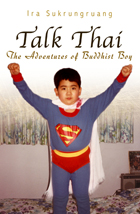 Talk Thai: The Adventures of Buddhist Boy
Ira Sukrungruang
University of Missouri Press, 2011 On one side of the door, the rich smell of sweet, spicy food and the calm of Buddhist devotion; on the other, the strangeness of a new land.
When Ira Sukrungruang was born to Thai parents newly arrived in the U.S., they picked his Jewish moniker out of a book of “American” names. In this lively, entertaining, and often hilarious memoir, he relates the early life of a first-generation Thai-American and his constant, often bumbling attempts to reconcile cultural and familial expectations with the trials of growing up in 1980s America.
Young Ira may have lived in Oak Lawn, Illinois, but inside the family’s bi-level home was “Thailand with American conveniences.” They ate Thai food, spoke the Thai language, and observed Thai customs. His bedtime stories were tales of Buddha and monkey-faced demons. On the first day of school his mother reminded him that he had a Siamese warrior’s eyes—despite his thick glasses—as Aunty Sue packed his Muppets lunch box with fried rice. But when his schoolmates played tag he was always It, and as he grew, he faced the constant challenge of reconciling American life with a cardinal family rule: “Remember, you are Thai.”
Inside the Thai Buddhist temple of Chicago, another “simulated Thailand,” are more rules, rules different from those of the Southside streets, and we see mainstream Western religion—“god people”—through the Sukrungruang family’s eyes. Within the family circle, we meet a mother who started packing for her return to Thailand the moment she arrived; her best friend, Aunty Sue, Ira’s second mother, who lives with and cooks for the family; and a wayward father whose dreams never quite pan out.
Talk Thai is a richly told account that takes us into an immigrant’s world. Here is a story imbued with Thai spices and the sensibilities of an American upbringing, a story in which Ira practices English by reciting lines from TV sitcoms and struggles with the feeling of not belonging in either of his two worlds. For readers who delight in the writings of Amy Tan, Gish Jen, and other Asian-Americans, Talk Thai provides generous portions of a still-mysterious culture while telling the story of an American boyhood with humor, playfulness, and uncompromising honesty.
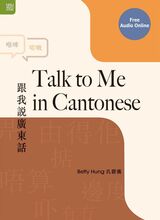 Talk to Me in Cantonese
Betty Hung
Hong Kong University Press, 2019 Talk to Me in Cantonese is a comprehensive and self-paced textbook tailor-made for English-speaking learners with a basic knowledge of Cantonese. It consists of 10 lessons, each covering a real-life situation using dialogues and stories. Through systematic explanations of the grammar and sentence patterns introduced in the text, readers are able to acquire crucial grammatical structures needed to express themselves fluently and precisely. Each lesson reinforces grammar usage with a review and a wide variety of exercises. The Cantonese pronunciation practice in Appendix 1 serves a dual purpose: it exposes the reader to the richness of the Cantonese language by using slang and colloquial expressions to practise every element of Cantonese pronunciation. This book is a sequel to A Cantonese Book, a popular textbook designed for beginning-level learners. Since there are very few books that help teach anything beyond survival Cantonese, Talk to Me in Cantonese is suitable for anyone who wants to continue their study, no matter what text they used to start with. The book is enhanced by downloadable audio files by native speakers for all dialogues, stories, vocabulary items, and grammatical practices in the text.
Talk, Tools, and Texts: A Logic-in-Use for Studying Lifespan Literate Action Development
Ryan J. Dippre
University Press of Colorado, 2020 Talk, Tools, and Texts tackles a perplexing issue: how can we envision writing as developing throughout a lifetime, from the first purposeful marks made on paper to the last? How can we make accounts of writing development that keep the complexity of our lives in mind while also providing useful insight to researchers, teachers, and writers? Drawing on eleven accounts of writers at different points in the lifespan (ages 12 to 80) and in different social circumstances (from a middle-school classroom to a bird-sanctuary newsletter), Talk, Tools, and Texts constructs a “logic-in-use” for following writers and their writing development at a variety of points in the lifespan. It also offers several strategies scholars can use in pursuit of their own research into lifespan writing.
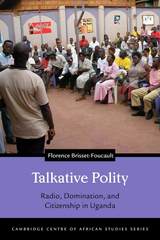 Talkative Polity: Radio, Domination, and Citizenship in Uganda
Florence Brisset-Foucault
Ohio University Press, 2019 For the first decade of the twenty-first century, every weekend, people throughout Uganda converged to participate in ebimeeza, open debates that invited common citizens to share their political and social views. These debates, also called “People’s Parliaments,” were broadcast live on private radio stations until the government banned them in 2009. In Talkative Polity, Florence Brisset-Foucault offers the first major study of ebimeeza, which complicate our understandings of political speech in restrictive contexts and force us to move away from the simplistic binary of an authoritarian state and a liberal civil society. Brisset-Foucault conducted fieldwork from 2005 to 2013, primarily in Kampala, interviewing some 150 orators, spectators, politicians, state officials, journalists, and NGO staff. The resulting ethnography invigorates the study of political domination and documents a short-lived but highly original sphere of political expression. Brisset-Foucault thus does justice to the richness and depth of Uganda’s complex political and radio culture as well as to the story of ambitious young people who didn’t want to behave the way the state expected them to. Positioned at the intersection of media studies and political science, Talkative Polity will help us all rethink the way in which public life works.
 Talkin' With Your Mouth Full: Conversations with the Videos of Steve Fagin
Steve Fagin, ed.
Duke University Press, 1998 Steve Fagin is an artist whose videos incorporate, challenge, and cross over into the realm of literary and cultural studies. Talkin’ with Your Mouth Full includes not only scripts of Fagin’s works but critical responses to—and meditations on—a variety of his influential videos by a distinguished, if intriguingly disparate, group of artists and scholars. Combining elements of criticism with various modes of artistic expression, these responses take the form of reviews, letters, interviews, and in one case an imaginary TV programming schedule. Interspersed with—and sometimes literally interrupting—the video scripts, these contributions interact with one another on multiple levels and complement Fagin’s scripts. Historical, political, and theoretical issues dovetail, ricochet, and interplay in this book, revealing a multiplicity of voices, concerns, and cultural revelations. Unique in its structure and intellectual approach, Talkin’ with Your Mouth Full will appeal equally to those who have seen Fagin’s videos and those who have not. Students of art history and cultural critique, and anyone interested in the ongoing dialogue between artists and theorists, will find particular value in this book.
Contributors. Gregg Bordowitz, Constance DeJong, Leslie Dick, Steve Fagin, Barry Gifford, Victoria Gill, Bill Horrigan, Bertha Jottar, Ivone Margulies, Patricia Mellencamp, Margaret Morse, Constance Penley, Vicente L. Rafael, Mark Rappaport, Andrew Ross, Vivian Sobchack, Trinh T. Minh-ha, John Welchman, Peter Wollen
Talking about Politics: Informal Groups and Social Identity in American Life
Katherine Cramer Walsh
University of Chicago Press, 2003 Whether at parties, around the dinner table, or at the office, people talk about politics all the time. Yet while such conversations are a common part of everyday life, political scientists know very little about how they actually work. In Talking about Politics, Katherine Cramer Walsh provides an innovative, intimate study of how ordinary people use informal group discussions to make sense of politics.
Walsh examines how people rely on social identities—their ideas of who "we" are—to come to terms with current events. In Talking about Politics, she shows how political conversation, friendship, and identity evolve together, creating stronger communities and stronger social ties. Political scientists, sociologists, and anyone interested in how politics really works need to read this book.
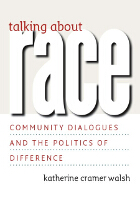 Talking about Race: Community Dialogues and the Politics of Difference
Katherine Cramer Walsh
University of Chicago Press, 2007 It is a perennial question: how should Americans deal with racial and ethnic diversity? More than 400 communities across the country have attempted to answer it by organizing discussions among diverse volunteers in an attempt to improve race relations. In Talking about Race, Katherine Cramer Walsh takes an eye-opening look at this strategy to reveal the reasons behind the method and the effects it has in the cities and towns that undertake it.
With extensive observations of community dialogues, interviews with the discussants, and sophisticated analysis of national data, Walsh shows that while meeting organizers usually aim to establish common ground, participants tend to leave their discussions with a heightened awareness of differences in perspective and experience. Drawing readers into these intense conversations between ordinary Americans working to deal with diversity and figure out the meaning of citizenship in our society, she challenges many preconceptions about intergroup relations and organized public talk. Finally disputing the conventional wisdom that unity is the only way forward, Walsh prescribes a practical politics of difference that compels us to reassess the place of face-to-face discussion in civic life and the critical role of conflict in deliberative democracy.
Talking All Morning
Robert Bly
University of Michigan Press, 1980 Robert Bly is the author of many books, including Jumping Out of Bed, The Man in the Black Coat Turns, and Iron John: A Book About Men. He has translated Neruda, Vallejo, and Lorca and received the National Book Award for his collection The Light Around the Body. His most recent book is The Maiden King: The Reunion of Masculine and Feminine, with Marion Woodman.
Talking Art: The Culture of Practice and the Practice of Culture in MFA Education
Gary Alan Fine
University of Chicago Press, 2018 In Talking Art, acclaimed ethnographer Gary Alan Fine gives us an eye-opening look at the contemporary university-based master’s-level art program. Through an in-depth analysis of the practice of the critique and other aspects of the curriculum, Fine reveals how MFA programs have shifted the goal of creating art away from beauty and toward theory. Contemporary visual art, Fine argues, is no longer a calling or a passion—it’s a discipline, with an academic culture that requires its practitioners to be verbally skilled in the presentation of their intentions. Talking Art offers a remarkable and disconcerting view into the crucial role that universities play in creating that culture.
Talking Back: Images of Jewish Women in American Popular Culture
Edited by Joyce Antler
Brandeis University Press, 1998 Fourteen provocative essays challenge traditional notions of Jewish female identity presented in mass media images, films, narrative, and stories by portraying the American Jewish woman not only as subject but as shaper of American popular culture. Sometimes internalizing negative presentations but more often "talking back" to them, Jewish women created alternative images that became tools of rebellion, subverting and dismantling such stereotypes as the "Yiddishe Mama," the Jewish Mother, and the Jewish American Princess. Over the course of the century -- and particularly as a consequence of feminism -- Jewish female novelists, screenwriters, dramatists, entertainers, and grass-roots feminists were able to create new possibilities for the expression of Jewish women's voices.
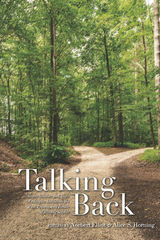 Talking Back: Senior Scholars and Their Colleagues Deliberate the Past, Present, and Future of Writing Studies
Norbert Elliot
Utah State University Press, 2020 In Talking Back, a veritable Who’s Who of writing studies scholars deliberate on intellectual traditions, current practices, and important directions for the future. In response, junior and mid-career scholars reflect on each chapter with thoughtful and measured moves forward into the contemporary environment of research, teaching, and service. Each of the prestigious chapter authors in the volume has three common traits: a sense of responsibility for advancing the profession, a passion for programs of research dedicated to advancing opportunities for others, and a reflective sense of their work accompanied by humility for their contributions. As a documentary, Talking Back is the first history of writing studies in autobiography.
Contributors: Jo Allen, Ann N. Amicucci, Akua Duku Anokye, Paige Davis Arrington, Doug Baldwin, John C. Brereton, Judy Buchanan, Hugh Burns, Leasa Burton, Ellen C. Carillo, William Condon, Dylan B. Dryer, Michelle F. Eble, Jennifer Enoch, Joan Feinberg, Patricia Friedrich, Cinthia Gannett, Eli Goldblatt, Shenika Hankerson, Janis Haswell, Richard Haswell, Eric Heltzel, Douglas Hesse, Bruce Horner, Alice S. Horning, Asao B. Inoue, Ruth Ray Karpen, Suzanne Lane, Min-Zhan Lu, Donald McQuade, Elisabeth L. Miller, Rebecca Williams Mlynarczyk, Sean Molloy, Les Perelman, Louise Wetherbee Phelps, Stacey Pigg, Sherry Rankins-Robertson, Jessica Restaino, J. Michael Rifenburg, Eliana Schonberg, Geneva Smitherman, Richard Sterling, Katherine E. Tirabassi, Devon Tomasulo, Martha A. Townsend, Mike Truong, Victor Villanueva, Edward M. White, Anne Elrod Whitney, Kathleen Blake Yancey
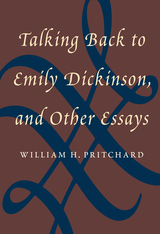 Talking Back to Emily Dickinson, and Other Essays
William H. Pritchard
University of Massachusetts Press, 2009 This collection makes the case for literary criticism as an informed, aggressive, personal, and often humorous response to writers and writing. An unrepentant academic, William Pritchard nonetheless finds himself looking vainly , in much current professional study of literature, for what he sees as criticism 's central task. This involves in part, an attentiveness to the performing voice e of the novelist, poetry, or essayist under discussion. to bring out this quality, the critic must exploit, with invention and intrepidity, his or her own responsive voice--must "talk back" to the work of art.
The essays, all of them about English and American writers, are arranged chronologically, beginning with Shakespeare, an Edmund Burke, and proceeding through the nineteenth and twentieth centuries to end with contemporaries like Kinglsey Amis, V. S. Naipaul, and Doris Lessing. Pritchard writes with equal authority about poetry and fiction; the collection also includes assessments of critics such as Matthew Arnold and Thomas Carlyle, Ford Madox Ford and R. P. Blackmur.
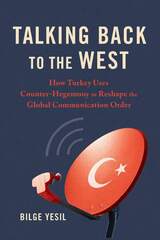 Talking Back to the West: How Turkey Uses Counter-Hegemony to Reshape the Global Communication Order
Bilge Yesil
University of Illinois Press, 2024 In the 2010s, Turkey’s ruling Justice and Development Party (AKP) began to mobilize an international media system to project Turkey as a rising player and counter foreign criticism of its authoritarian practices. Bilge Yesil examines the AKP’s English-language communication apparatus, focusing on its objectives and outcomes, the idea-generating framework that undergirds it, and the implications of its activities. She also analyzes the decolonial and pan-Islamist messages AKP-sponsored outlets deploy to position Turkey as a burgeoning great power opposed to imperialism and claiming to be the voice of oppressed Muslims around the world. As the AKP wields this rhetoric to further its geopolitical and economic goals, media outlets pursue their own objectives by obfuscating facts with identity politics, demonizing the West to aggrandize the East and rallying Muslims under Turkey’s purportedly benevolent leadership. Insightfully exploring the crossroads of communications and authoritarianism, Talking Back to the West illuminates how the Erdogan government and its media allies use history, religion, and identity to pursue complementary agendas and tighten the AKP’s grip on power.
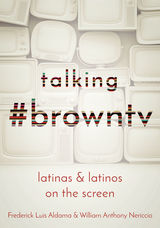 Talking #browntv: Latinas and Latinos on the Screen
Frederick Luis Aldama and William Anthony Nericcio
Ohio State University Press, 2019 Like two friends sitting down in front of the television together, in Talking #browntv, Frederick Luis Aldama and William Anthony Nericcio dialogue about the representations of Latina/os in American television and film from the twentieth century to the present day. One part conversation, one part critique, one part visual cultural studies, and one part rant against the culture industry profiting off warped caricatures of Latina/o subjectivities, Aldama and Nericcio analyze the ways in which Latinx performers have been mediated—with varying degrees of complexity—on the American screen. A comprehensive review of the history of Mexicans, Mexican Americans, Hispanics, Chicana/os, Latina/os, and Latinx performers in television and film, Talking #browntv boldly interrogates one of the largest paradoxes in the history of American television: Why are there so few Latina/os on television, and why, when they do appear, are they so often narcos, maids, strumpets, tarts, flakes, and losers?
From the subversive critiques embedded in well-loved children’s characters like Speedy Gonzalez to the perpetuation of racial stereotypes in modern-era pornography, from Eva Longoria as ethnic mannequin to J-Lo flipping the sexy Latina music video on its head in “I Luh Ya Papi,” and with more than 150 full-color images, Aldama and Nericcio seek to expose the underlying causes as to why Latina/os constitute only 2 percent of mainstream cultural production when they’re the majority minority in the US. In a moment when anti-Mexican and anti-immigrant rhetoric oozes from TV sets and medias platform, Talking #browntv emerges as a bold antidote, an eloquent rejoinder, and a thoughtful meditation on Latina/os on the American screen and in America today.
 Talking Classics: The Shock of the Old
Mary Beard
University of Chicago Press The incomparable Mary Beard is back, and she’s talking all things classics.
Why the ongoing fascination with the ancient world? This witty, approachable book asks why—for better or (sometimes) worse—antiquity continues to exert such a powerful hold on the contemporary imagination. Recalling a formative childhood encounter with a four-thousand-year-old piece of bread in a museum, Beard introduces the idea of thauma, or wonder, that kick-started a lifetime engaging with classics. It was not the canonical “greats” of ancient literature and art that initially drew her in, she confesses, but rather the more intimate, messy, and humdrum evidence of daily life in the remote past.
Confronting the uses and abuses of symbols of the ancient world, Beard reminds us that the traditions and “masterpieces” of Greece and Rome have certainly been politicized, but they belong to neither the left nor the right. Happily, no one owns the past. She warns us not to let a sense of reverence or overfamiliarity dampen the “shock of the old,” arguing that one of the most important things that classics teach us is how to grapple with complicated and controversial things. “The Greeks and Romans are long dead, they cannot answer back, and you can say what you like about them,” she reminds readers. “The simple fact that classics belong to none of us can offer a safe space to argue about the most difficult debates we face now.”
Beard welcomes everyone into classics. “It is not compulsory to be excited by the ancient world,” she writes. “But it can be a shame not to be.” This charming, sharp, and readable book from one of the world’s most entertaining classicists offers something for both new and established fans of classics, bringing new wonder and curiosity to even the most ancient of ideas.
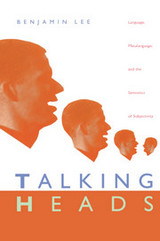 Talking Heads: Language, Metalanguage, and the Semiotics of Subjectivity
Benjamin Lee
Duke University Press, 1997 In Talking Heads, Benjamin Lee situates himself at the convergence of multiple disciplines: philosophy, linguistics, anthropology, and literary theory. He offers a nuanced exploration of the central questions shared by these disciplines during the modern era—questions regarding the relations between language, subjectivity, community, and the external world. Scholars in each discipline approach these questions from significantly different angles; in seeking to identify and define the intersection of these angles, Lee argues for the development of a new sense of subjectivity, a construct that has repercussions of immense importance beyond the humanities and into the area of politics.
Talking Heads synthesizes the views and works of a breathtaking range of the most influential modern theorists of the humanities and social sciences, including Austin, Searle, Derrida, Jakobson, Bakhtin, Wittgenstein, Peirce, Frege, Kripke, Donnellan, Putnam, Saussure, and Whorf. After illuminating these many strands of thought, Lee moves beyond disciplinary biases and re-embeds within the context of the public sphere the questions of subjectivity and language raised by these theorists. In his examination of how subjectivity relates not just to grammatical patterns but also to the specific social institutions in which these patterns develop and are sustained, Lee discusses such topics as the concept of public opinion and the emergence of Western nation-states.
 Talking History: Seminar Culture at the Institute of Historical Research, 1921–2021
Edited by David Manning
University of London Press, 2024 Since its founding in 1921, the Institute of Historical Research (IHR) at the University of London has seen students and teachers come together, socially and intellectually, to engage in lively academic seminars. But for what purpose and with what value?
Talking History provides a defence of the seminar as a central element in historians' teaching, research and sense of community. Covering a range of the IHR’s long-running seminar series, which are differentiated by historical period, region and/or theme, the book presents the seminars as a local, national and international hub for scholarship that emerges from and is sustained by the ongoing learning practices of historians as scholars and people. Talking History bears witness to a seminar culture of evolving, multifarious synergies between teaching, researching and learning, historiography and participation — intertextual, interpersonal, intergenerational and intercultural. Viewed as such, the seminars constitute a living tradition, stimulating and incorporating dynamic change over time to contribute not just to the development of historiography but intellectual life more generally, often in conversation with major political events and cultural phenomena.
This original and significant book therefore reflects upon, and gives further expression to, the ongoing evolution of historical research and its role in wider society today.
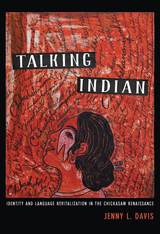 Talking Indian: Identity and Language Revitalization in the Chickasaw Renaissance
Jenny L. Davis
University of Arizona Press, 2018 Winner of the Beatrice Medicine Award
In south-central Oklahoma and much of “Indian Country,” using an Indigenous language is colloquially referred to as “talking Indian.” Among older Chickasaw community members, the phrase is used more often than the name of the specific language, Chikashshanompa’ or Chickasaw. As author Jenny L. Davis explains, this colloquialism reflects the strong connections between languages and both individual and communal identities when talking as an Indian is intimately tied up with the heritage language(s) of the community, even as the number of speakers declines.
Today a tribe of more than sixty thousand members, the Chickasaw Nation was one of the Native nations removed from their homelands to Oklahoma between 1837 and 1838. According to Davis, the Chickasaw’s dispersion from their lands contributed to their disconnection from their language over time: by 2010 the number of Chickasaw speakers had radically declined to fewer than seventy-five speakers.
In Talking Indian, Davis—a member of the Chickasaw Nation—offers the first book-length ethnography of language revitalization in a U.S. tribe removed from its homelands. She shows how in the case of the Chickasaw Nation, language programs are intertwined with economic growth that dramatically reshape the social realities within the tribe. She explains how this economic expansion allows the tribe to fund various language-learning forums, with the additional benefit of creating well-paid and socially significant roles for Chickasaw speakers. Davis also illustrates how language revitalization efforts are impacted by the growing trend of tribal citizens relocating back to the Nation.
Talking Leadership: Conversations with Powerful Women
Hartman, Mary
Rutgers University Press, 1999 Talking Leadership presents a though-provoking look at differences and commonalities in the lives and leadership approaches of some of today's outstanding women in areas ranging from philanthropy to politics, and from business to academia. Regardless of their backgrounds and areas of expertise, these women are committed to social change--change that includes improving women's lives and options.
Well beyond personal details and entertaining anecdotes, these conversations capture a variety of fascinating experiences and insights reflecting what it is like to be a woman and a major leader in America at the close of the twentieth century. Many of these women hold positions in which womanhood sets them apart--not infrequently in uncomfortable ways. Talking Leadership gives testimony not only to how far women have come, but also how far they still have to go to claim their places as leaders.
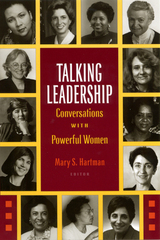 Talking Leadership: Conversations with Powerful Women
Hartman, Mary
Rutgers University Press, 1999 Whether we love it, hate it, or use it just to pass the time, most adults in the United States are watching more television than ever, up to four hours a day by some estimates. Our devotion to commercial television gives it unprecedented power in our lives. Advertisers and television executives want us to spend as much time as we can in front of our sets, for it is access to our brains that they buy and sell. Yet the most important effect of television may be one that no one intends-accelerated destruction of the natural environment. Consuming Environments explores how, with its portrayal of a world of simulated abundance, television has nurtured a culture of consumerism and overconsumption. The average person in the US consumers more than twice the grain and ten times the oil of a citizen of Brazil or Indonesia. And people in less industrialized countries suffer while their resources while their resources are commandeered to support comfortable lifestyles in richer nations. Using detailed examples illustrated with images from actual commercials, news broadcasts, and television shows, and authors demonstrate how ads and programs are put together in complex way s to manipulate viewers, and they offer specific ways to counteract the effects of TV and overconsumption's assault on the environment.
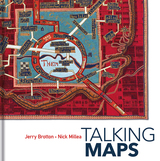 Talking Maps
Jerry Brotton and Nick Millea
Bodleian Library Publishing, 2019 Every map tells a story. Some provide a narrative for travelers, explorers, and surveyors or offer a visual account of changes to people’s lives and surroundings, while others tell imaginary tales, transporting us to fictional worlds created by writers and artists. In turn, maps generate more stories, taking users on new journeys in search of knowledge and adventure.
Drawing on the Bodleian Library’s outstanding map collection and covering almost a thousand years, Talking Maps takes a new approach to map-making by showing how maps and stories have always been intimately entwined. Including such rare treasures as a unique map of the Mediterranean from the eleventh-century Arabic Book of Curiosities, a twelfth-century map of the world by al-Sharīf al-Idrīsī, and C. S. Lewis’s map of Narnia, this fascinating book analyzes maps as objects that enable us to cross sea and land; as windows into alternative and imaginary worlds; as guides to reaching the afterlife; as tools to manage cities, nations, and empires; as images of environmental change; and as digitized visions of the global future.
By telling the stories behind the artifacts and those generated by them, Talking Maps reveals how each map is not just a tool for navigation but also a worldly proposal that helps us to understand who we are by describing where we are.
Talking Pillow
Angela Ball
University of Pittsburgh Press, 2017 Talking Pillow celebrates love as amazement, sustenance, and the progenitor of scarce-believable loss. The book centers around the sudden death of the author’s long-time partner and travels outward to events in the world at large. Imagining themselves into multiple times, places, and lives, the poems comically explore the possibilities of attachment between people and the absurdity of death’s sudden intrusion. Antic and often funny, these poems converse with all that we care about, fear, and fail to understand.
 Talking Politics?: What You Need to Know before Opening Your Mouth
Sheila Suess Kennedy
Georgetown University Press, 2016 Honest, objective, and informed political debates are all too rare in today’s polarized and partisan climate. Public policy is increasingly driven by ideology while political spin, distortions, and even demonizing opponents by disseminating outright lies are routine practice from Washington to the local city council. Super-heated and hyper-partisan rhetoric, increasingly homogeneous political and ideological communities, and the public’s spotty knowledge about our political system all undermine informed and considered responses to policy debates. This book identifies common areas of confusion or misunderstanding about our political system—clarifying many distortions of accepted history, constitutional law, economics, and science—to help readers distinguish documented facts from the different conclusions and interpretations that may be drawn from those facts. Sheila Suess Kennedy aims to create a more informed electorate and to better ground debates in fact, from Capitol Hill to the family dinner table. Talking Politics? What You Need to Know before Opening Your Mouth provides a solid starting point from which Americans can build more persuasive arguments for their preferred policies, whatever they may be, and will interest students of political science, civics, and history, from high school to undergraduates, and the general public interested in politics and informed discussion.
Talking Rocks: Geology and 10,000 Years of Native American Tradition in the Lake Superior Region
Ron Morton
University of Minnesota Press, 2003 Join the conversation as an earth scientist and a Native American elder—wise men from two cultures—explore the natural history of the Lake Superior region, examining both the science and the spirit of the land. As the geologist carefully presents a modern scientific perspective, the storyteller eloquently recounts a traditional Native American understanding, passed on through tales, myths, and symbols that illustrate how intimately his people have known and honored the earth and its history for over a hundred centuries. Talking Rocks is not only a story of geological history told from two perspectives, it is also a chronicle of two people from very different cultural and scientific heritages learning to understand and appreciate each other’s distinct yet complementary ways of viewing the land we share.
 The Talking Room
Marianne Hauser
University of Alabama Press, 1976 A pregnant thirteen-year-old’s apocalyptic vision of the late 20th century
The Talking Room reflects an apocalyptic vision of the late 20th century, seen through the eyes of a pregnant thirteen-year-old who may not be a test tube baby. The Lesbian relationship between the mother J—wild, lost, beautiful—and competent Aunt V, a businesswoman, reveals itself to the reader as “the talking room” becomes the sounding board for the endless fights, endless reconciliations. V’s desperate search for the beloved J through the nights of waterfront bars is lightened by wildly comic excursions reminiscent of our great American humorists. With wit, poetic clarity and compassion, Marianne Hauser explores the paradoxes of our age—need for love yet flight from love, search for self yet self-destruction—a dilemma shared alike by today’s heterosexual and homosexual world. The author’s multifaceted view defies dogma or simplification as her characters draw us into their turbulent and deeply human drama.
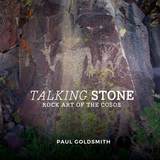 Talking Stone: Rock Art of the Cosos
Paul Goldsmith
University of Utah Press, 2017 Hidden away in the canyons of a highly restricted military base on the edge of the Mojave Desert is the largest concentration of rock art in North America, possibly in the world. Images of animals, shamans, and puzzling abstract forms were pecked and painted on stone over thousands of years by a now long-gone culture. Talking Stone: Rock Art of the Cosos is a multivocal investigation of this art. Acclaimed cinematographer Paul Goldsmith takes the reader on a visual journey through this limited access area with more than 160 stunning color photographs. The book is structured around Goldsmith’s treks into the remote desert canyons and his meetings with archaeologists, Native Americans, a psychologist, an artist, bow hunters, and the commanding officer in charge of the military base. The result is a visually striking book that gives the viewer a personal and visceral experience of this enigmatic art.
Includes 160 color photographs.
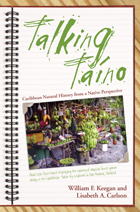 Talking Taino: Caribbean Natural History from a Native Perspective
William F. Keegan and Lisabeth A. Carlson
University of Alabama Press, 2008 Keegan and Carlson, combined, have spent over 45 years conducting archaeological research in the Caribbean, directing projects in Trinidad, Grenada, St. Lucia, Puerto Rico, the Dominican Republic, Haiti, Cuba, Jamaica, Grand Cayman, the Turks & Caicos Islands, and throughout the Bahamas. Walking hundreds of miles of beaches, working without shade in the Caribbean sun, diving in refreshing and pristine waters, and studying the people and natural environment around them has given them insights into the lifeways of the people who lived in the Caribbean before the arrival of Christopher Columbus. Sadly, harsh treatment extinguished the culture that we today call Taíno or Arawak. In an effort to repay their debt to the past and the present, the authors have focused on the relationship between the Taínos of the past (revealed through archaeological investigations) and the present natural history of the islands. Bringing the past to life and highlighting commonalities between past and present, they emphasize Taíno words and beliefs about their worldview and culture.
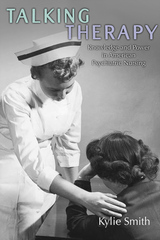 Talking Therapy: Knowledge and Power in American Psychiatric Nursing
Kylie Smith
Rutgers University Press, 2020 First place in the 2020 American Journal of Nursing Book of the Year Award in History and Public Policy
Winner of the 2020 Lavinia L. Dock Award from the American Association for the History of Nursing
Talking Therapy traces the rise of modern psychiatric nursing in the United States from the 1930s to the 1970s. Through an analysis of the relationship between nurses and other mental health professions, with an emphasis on nursing scholarship, this book demonstrates the inherently social construction of ‘mental health’, and highlights the role of nurses in challenging, and complying with, modern approaches to psychiatry. After WWII, heightened cultural and political emphasis on mental health for social stability enabled the development of psychiatric nursing as a distinct knowledge project through which nurses aimed to transform institutional approaches to patient care, and to contribute to health and social science beyond the bedside. Nurses now take for granted the ideas that underpin their relationships with patients, but this book demonstrates that these were ideas not easily won, and that nurses in the past fought hard to make mental health nursing what it is today.
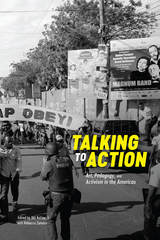 Talking to Action: Art, Pedagogy, and Activism in the Americas
Bill Kelley, Jr. with Rebecca Zamora
School of the Art Institute of Chicago, 2017 Talking to Action: Art, Pedagogy, and Activism in the Americas is the first publication to bring together scholarship, critical essays, and documentation of collaborative community-based art making by researchers from across the American hemisphere. The comprehensive volume is a compendium of texts, analysis, and research documents from the Talking to Action research and exhibition platform, part of the Getty’s Pacific Standard Time: LA/LA initiative, a far-reaching and ambitious exploration of Latin American and Latino art in dialogue with Los Angeles. While the field of social practice has had an increasingly high profile within contemporary art discourse, this book documents artists who have been under-recognized because they do not show in traditional gallery or museum contexts and are often studied by specialists in other disciplines, particularly within the Latin American context. Talking to Action: Art, Pedagogy, and Activism in the Americas addresses the absence of a publication documenting scholarly exchange between research sites throughout the hemisphere and is intended for those interested in community-based practices operating within the intersection of art, activism, and the social sciences.
 Talking to Action: Spanish Language Edition
Bill Kelley, Jr. with Rebecca Zamora
School of the Art Institute of Chicago, 2017 Talking to Action: Art, Pedagogy, and Activism in the Americas is the first publication to bring together scholarship, critical essays, and documentation of collaborative community-based art making by researchers from across the American hemisphere. The comprehensive volume is a compendium of texts, analysis, and research documents from the Talking to Action research and exhibition platform, part of the Getty’s Pacific Standard Time: LA/LA initiative, a far-reaching and ambitious exploration of Latin American and Latino art in dialogue with Los Angeles. While the field of Social Practice has had an increasingly high profile within contemporary art discourse, this book documents artists who have been under-recognized because they do not show in traditional gallery or museum contexts and are often studied by specialists in other disciplines, particularly within the Latin American context. Talking to Action: Art, Pedagogy, and Activism in the Americas, addresses the absence of a publication documenting scholarly exchange between research sites throughout the hemisphere and is intended for those interested in community-based practices operating within the intersection of art, activism, and the social sciences.
This is the Spanish language edition.
Talking to North Korea: Ending the Nuclear Standoff
Glyn Ford
Pluto Press, 2018 Few attempts have been made to understand the internal logic of Kim Jong-un’s regime and why life in North Korea is so difficult.
This provocative insider’s account blasts apart the myths which paint North Korea as a rogue state run by a mad leader. Informed by extraordinary access to the country's leadership, Glyn Ford investigates the regime from the inside, providing game-changing insights. Acknowledging that North Korea is a deeply flawed and barbaric state, he nonetheless shows that sections of the leadership are desperate to modernize and end their isolation.
With chapters on recent developments including the Trump / Kim summit, Ford supports a dialogue between East and West and provides a road map to avert the looming threat of a war that would threaten the lives of millions.
Talking to Strangers
Patricia Dobler
University of Wisconsin Press, 1986 In her first book of poems, Patricia Dobler records her memories of the Ohio mill town where she grew up in the 1950s. but the poems range over time and the memories of others, as well: her immigrant Hungarian grandparents, her parent's tensions during hard times (”Years spilled on the kitchen table, / picked over like beans or old bills”), the dangers, losses, and occasional triumphs of hard-working men and women.
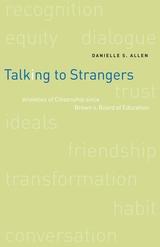 Talking to Strangers: Anxieties of Citizenship since Brown v. Board of Education
Danielle Allen
University of Chicago Press, 2004 "Don't talk to strangers" is the advice long given to children by parents of all classes and races. Today it has blossomed into a fundamental precept of civic education, reflecting interracial distrust, personal and political alienation, and a profound suspicion of others. In this powerful and eloquent essay, Danielle Allen, a 2002 MacArthur Fellow, takes this maxim back to Little Rock, rooting out the seeds of distrust to replace them with "a citizenship of political friendship."
Returning to the landmark Brown v. Board of Education decision of 1954 and to the famous photograph of Elizabeth Eckford, one of the Little Rock Nine, being cursed by fellow "citizen" Hazel Bryan, Allen argues that we have yet to complete the transition to political friendship that this moment offered. By combining brief readings of philosophers and political theorists with personal reflections on race politics in Chicago, Allen proposes strikingly practical techniques of citizenship. These tools of political friendship, Allen contends, can help us become more trustworthy to others and overcome the fossilized distrust among us.
Sacrifice is the key concept that bridges citizenship and trust, according to Allen. She uncovers the ordinary, daily sacrifices citizens make to keep democracy working—and offers methods for recognizing and reciprocating those sacrifices. Trenchant, incisive, and ultimately hopeful, Talking to Strangers is nothing less than a manifesto for a revitalized democratic citizenry.
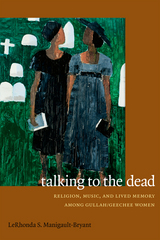 Talking to the Dead: Religion, Music, and Lived Memory among Gullah/Geechee Women
LeRhonda S. Manigault-Bryant
Duke University Press, 2014 Talking to the Dead is an ethnography of seven Gullah/Geechee women from the South Carolina lowcountry. These women communicate with their ancestors through dreams, prayer, and visions and traditional crafts and customs, such as storytelling, basket making, and ecstatic singing in their churches. Like other Gullah/Geechee women of the South Carolina and Georgia coasts, these women, through their active communication with the deceased, make choices and receive guidance about how to live out their faith and engage with the living. LeRhonda S. Manigault-Bryant emphasizes that this communication affirms the women's spiritual faith—which seamlessly integrates Christian and folk traditions—and reinforces their position as powerful culture keepers within Gullah/Geechee society. By looking in depth at this long-standing spiritual practice, Manigault-Bryant highlights the subversive ingenuity that lowcountry inhabitants use to thrive spiritually and to maintain a sense of continuity with the past.
 Talking to the Rain: Paintings and Carvings on Stone in Chihuahuan Desert Landscapes
Polly Schaafsma
University of Utah Press, 2025 Explores ancient dialogue between desert farmers and the cosmos
In this visually stunning volume, Polly Schaafsma, leading authority on pre-Hispanic Indian rock imagery and kiva murals of the greater American Southwest, provides an insightful journey into the petroglyphs and rock paintings of the Jornada Mogollon farmers in southern New Mexico's lower Chihuahuan Desert.
Talking to the Rain defines the Rio Grande Tradition, emphasizing the foundational Jornada Style as exemplified by its Mimbres-like imagery as well as its diverse and complex rain-making symbolism. By examining visual metaphors of cosmology and place-making, the book reveals an ancient dialogue between farmers and the cosmos that places rain for crops as its central concern. Exceptional color photographs by François Gohier invite readers to experience the landscapes and locations selected for creating these images. Both scholarly and accessible, Talking to the Rain offers a fresh perspective on cultural landscapes and the profound connections between people, art, and environment, making it essential for understanding Southwest cultural history.
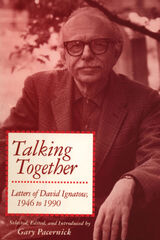 Talking Together: Letters of David Ignatow, 1946-1990
David Ignatow; Selected, Edited and Introduced by Gary Pacernick
University of Alabama Press, 1992 In his letters, David Ignatow finds company and shares the news with them and now, with us, his new company of readers
The letters of David Ignatow reveal the poet in “company” with a community of writers as he shares with them the details and nuances of his everyday existence: the key acts of friendship and enmity, of good news and bad, of struggle, work, success, and failure that comprise a life devoted to making art. The letters also serve as a vehicle for Ignatow to express his views on a whole range of issues from writing, teaching, and editing poetry, to his visions of the self, death and the cosmos. But the key is “company”—the support system that helps sustain the poet and that enables him to help others.
One of the many things we may learn from the letters of David Ignatow is the power of the individual to affect another’s life, to help sustain and even change it.
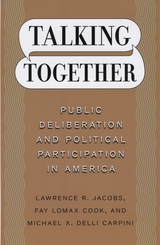 Talking Together: Public Deliberation and Political Participation in America
Lawrence R. Jacobs, Fay Lomax Cook, and Michael X. Delli Carpini
University of Chicago Press, 2009 Challenging the conventional wisdom that Americans are less engaged than ever in national life and the democratic process, Talking Together paints the most comprehensive portrait available of public deliberation in the United States and explains why it is important to America’s future. The authors’ original and extensive research reveals how, when, and why citizens talk to each other about the issues of the day. They find that—in settings ranging from one-on-one conversations to e-mail exchanges to larger and more formal gatherings—a surprising two-thirds of Americans regularly participate in public discussions about such pressing issues as the Iraq War, economic development, and race relations. Pinpointing the real benefits of public discourse while considering arguments that question its importance, Talking Together presents an authoritative and clear-eyed assessment of deliberation’s function in American governance. In the process, it offers concrete recommendations for increasing the power of talk to foster political action.
Talking Union
Judith Stepan-Norris and Maurice Zeitlin
University of Illinois Press, 1996 As an institutional, political,
and cultural oral history of the struggle to unionize the River Rouge
Plant near Detroit during the 1930s and 40s, this book affords us a rare
insight into the difficulties of organizing a union in the face of the
then anti-union Ford Motor Company. Against a backdrop of the depression
and entrenched racism, history was made by courageous individuals whose
rich, eloquent stories illuminate the character and views of others like
them across the nation, from all backgrounds: left, right, and center;
black and white; native and foreign born, Jew and gentile.
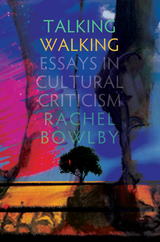 Talking Walking: Essays in Cultural Criticism
Rachel Bowlby
Sussex Academic Press, 2022 "Bowlby's work brilliantly insists on the relevance of cultural critique to our own everyday lives."--Prof. Josephine McDonagh, King's College London *** "This is a wonderfully readable, eloquent, wise, witty, and absorbing book."--J. Hillis Miller, Distinguished Prof. Emeritus, U. of California, Irvine *** When something called 'theory' first broke on to the seemingly stagnant scene of literary studies, it offered bright new ways and fields for critical reading, including new methods and subjects, as well as new words to speak them. The short pieces brought together in Talking Walking engage with all sorts of arguments then and now about the uses and history of critical reading-of literature, and also of other cultural forms. There is much on the changing styles of literary-critical writing, and on the place of particular writers-Virginia Woolf or Jacques Derrida-in contemporary critical culture. There are pieces on cliches, on footnotes, on the language of the university job interview, on the use of 'domesticate' as a catch-all negative term. There are also essays on cultural questions informed by critical theory. For instance: why has the topic of walking been such a fruitful thinking theme in literature and philosophy? How does the history of shopping and marketing theory intersect with those of literature and subjectivity? How, in the light of reproductive technologies and new social forms, has becoming a parent turned into a culturally prominent kind of story? These are some of the questions that arise in the interview and essays that make up Rachel Bowlby's book, which derives from several decades of working and writing and talking and walking within the changing contemporary landscape of literary and critical studies. (Series: Critical Voices) [Subject: Literary Theory, Sociology]
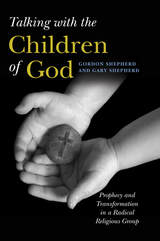 Talking with the Children of God: Prophecy and Transformation in a Radical Religious Group
Gordon Shepherd and Gary Shepherd
University of Illinois Press, 2010 Grounded in direct, systematic observation by neutral observers, Talking with the Children of God is a unique study of the radical religious movement now known as The Family International. The book draws on extraordinarily candid interviews with the group's leaders and administrative staff. In revealing new information about the organization's history, beliefs, and use of prophecy, Gordon Shepherd and Gary Shepherd offer a highly detailed case study that is both an antidote to sensationalized coverage of the group and a means for understanding the transformational practices of new religious movements in general. One of the most controversial groups emerging from the Jesus People movement of the 1960s, the Family originally was known as The Children of God. Under leader David Berg, members proclaimed an apocalyptic "Endtime," shunned secular occupations, lived communally, and adopted unusual sexual practices that led to abuse scandals in the 1970s and 1980s. Following Berg's death in 1994, the organization began to dramatically alter its evangelization efforts and decision-making processes. Talking with the Children of God builds a picture of a complex organization with ten thousand core members worldwide, including details on the lives, careers, and responsibilities of the second generation and their efforts to defend their faith. The authors summarize the Family's history and beliefs as well as its controversial past. In particular, they analyze the organization's use of prophecy--or channeled revelations from Jesus and other spiritual beings--for making decisions and setting policy, revealing how this essentially democratic process works and how it shapes Family life and culture. These remarkable insights are the result of sixteen years of surveys and field observations conducted in Family member homes in sixteen countries, plus four days of face-to-face interviews with Family leaders and organizational staff. The volume also includes condensed transcripts of the interviews with analysis by Shepherd and Shepherd.
 Talks to Teachers on Psychology: And to Students on Some of Life's Ideals
William James
Harvard University Press, 1983 Despite the modesty of its title, the publication of this book in 1899 was a significant event. It marked the first application of the relatively new discipline of psychology, and specifically of James's theses in The Principles of Psychology, to educational theory and classroom practice. The book went through twelve printings in as many years and has never been out of print. Among its innovative features were James's maxims "No reception without reaction" and "No impression without expression"; a new emphasis on the biology of behavior and on the role of instincts; and discussions of the relevance to elementary school education of what is known about will, attention, memory, apperception, and the association of ideas.
Appended to the fifteen talks to schoolteachers were three talks to college students, as pertinent today as when they were written: "The Gospel of Relaxation," "On a Certain Blindness in Human Beings," and "What Makes a Life Significant?"
Tall Tale America: A Legendary History of our Humorous Heroes
Walter Blair
University of Chicago Press, 1987 "Johnny Appleseed, Davy Crockett, Pecos Bill, Paul Bunyan and John Henry have all become heroes of American folklore. Some of them, like Crokett, were real, but all have become the subject of tall tales. This is a folksy history of the United States, told as if the characters were all real. This panoramic (if completely untrue) history begins with Columbus. . . . En route to its end in the 1940s (where traditional American heroes are enlisted to fight in World War II), it covers the great and small events of our national history, including the overlooked, but important ones, such as the invention of the prairie dog."—Washington Post Book World
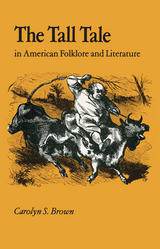 The Tall Tale in American Folklore and Literature
Carolyn S. Brown
University of Tennessee Press, 1989 To Carolyn Brown's mind, the tall tale is not necessarily an account of the adventures of a larger-than-life hero, nor is it just a humorous first-person narrative exaggerated to outlandish proportions. The tall tale is also a social statement that identifies and binds a folk group by flaunting the peculiar knowledge and experiences of group members, and it is a tool for coping with a stressful or even chaotic world, for conquering life's problems by laughing at them. Drawing on previous research and her own original fieldwork, the author develops in detail this definition of the tall tale as a genre of folklore, then explores how tall tale methods and meaning have been translated into literary humor. The work moves from the Crockett Almanacs, sketches, newspaper hoaxes, and frontier frame tales to present new readings of such standard works as George Washington Harris’ Sut Lovingood and Mark Twain’s Autobiography. Brown probes the ways that writers have used this genre to create a complex theoretical relationship among text, author, narrator, and reader. Finally, the author alludes to the echoes of all tale attitudes and style still found in modern written humor.
Brown views the tall tale as both challenge and entertainment, as well as a story that identifies and binds a folk group and helps people to cope with a stressful world.
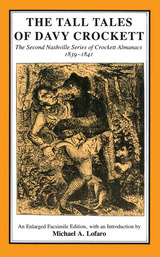 The Tall Tales of Davy Crockett: The Second Nashville Series of Crockett Almanacs, 1839–1841
Michael A. Lofaro
University of Tennessee Press, 1986 Published from 1835 to 1856, the Crockett almanacs were the primary force in the creation of a tall tale Davy Crockett as our country's first comic superman. In these rare almanacs, the historical Crockett became a fictional backwoods screamer who could "run faster,—jump higher,—squat lower,—dive deeper,—stay under longer,—and come out drier, than any many in the whole country."
As the best known of the early ring-tailed roarers, Davy also became an integral building block in the humor of the Old Southwest. Ben Harding, Crockett's fictional sidekick, warned nineteenth-century readers that the "terrificashus" adventures of Davy, Mike Fink, the "riproarious she-males," and the fabulous woodcuts that illustrated them were so funny that "You had best to hoop your ribs before you reed 'em or you will shake your bowels out a Laffing."
Although the significance of the Nashville almanacs in initiating and developing Crockett's mythic world is an accepted tenet in the study of American humor, the second series of almanacs has never before been reproduced in facsimile, and two thirds of the tales have never before been collected or reprinted in any readily accessible form.
In his introduction, Michael A. Lofaro examines the history and evolution of these tall tales and stresses their importance both as transitional markers in the growth of the Crockett legend and as cultural mirrors of the attitudes of their publishers and readers.
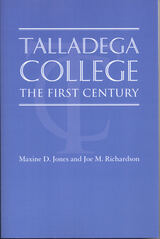 Talladega College: The First Century
Maxine D. Jones
University of Alabama Press, 1990 An early history of Talladega College
In 1954 when the U.S. Supreme Court declared separate education inherently unequal, Talladega College was a notable black liberal arts school thriving in rural east Alabama. This is a study of that college, its growth, development, and significance, from its inception by freed slaves in the 1860s through the student protest movement more than a century later. Initially Talladega offered primary, secondary, nursing, and theological as well as college-level work. Under strong leadership of visionaries such as James T. Cater, the school’s first black dean, Talladega became a first-rate liberal arts institution. During its first decades the school struggled against poverty, white hostility, Ku Klux Klan threats, and internal dissension to produce a number of teachers and ministers for Alabama schools and churches.
This book examines such college issues as finance, enrollment, students, educational policy, and the often stormy relationship with black and white neighbors. It provides a sense of both the obstacles to and the positive consequences of building and nurturing a black college.
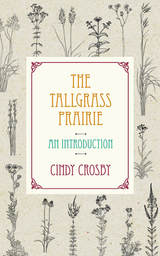 The Tallgrass Prairie: An Introduction
Cindy Crosby
Northwestern University Press, 2017 More than a region on a map, North America's vast grasslands are an enduring place in the American heart. Unfolding along and beyond the Mississippi River, the tallgrass prairie has entranced and inspired its natives and newcomers as well as American artists and writers from Willa Cather to Mark Twain. The Tallgrass Prairie is a new introduction to the astonishing beauty and biodiversity of these iconic American spaces.
Like a walking tour with a literate friend and expert, Cindy Crosby's Tallgrass Prairie prepares travelers and armchair travelers for an adventure in the tallgrass. Crosby's engaging gateway assumes no prior knowledge of tallgrass landscapes, and she acquaints readers with the native plants they’ll discover there. She demystifies botanic plant names and offers engaging mnemonic tips for mastering Latin names with verve and confidence. Visitors to the prairie will learn to identify native plants using the five senses to discover what makes each plant unique or memorable. In the summer, for example, the unusual square stem of cup plant, Silphium perfoliatum, sets it apart from its neighbors. And its distinctive leaf cups water after the rain.
A gifted raconteur, Crosby tells stories about how humankind has adopted the prairie as a grocery, an apothecary, and even as a shop for love charms. Rounding out this exceptional introduction are suggestions for experiencing the American prairie, including journaling techniques and sensory experiences, tips for preparing for a hike in tallgrass landscapes, ways to integrate native prairie plants into home landscapes (without upsetting the neighbors), and a wealth of resources for further exploration.
An instant classic in the tradition of American naturalist writing, The Tallgrass Prairie will delight not only scholars and policy makers, but guests to tallgrass prairie preserves, outdoors enthusiasts and gardeners, and readers interested in American ecosystems and native plants.
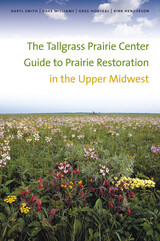 The Tallgrass Prairie Center Guide to Prairie Restoration in the Upper Midwest
Daryl Smith
University of Iowa Press, 2010 Although less than 3 percent of the original vast landscape survives, the tallgrass prairie remains a national treasure, glowing with a vast array of colorful wildflowers in spring and summer, enriched by the warm reds and browns of grasses in fall and winter. This comprehensive manual, crafted by the staff of the Tallgrass Prairie Center at the University of Northern Iowa, will be an essential companion for everyone dedicated to planning, developing, and maintaining all types of prairie restorations and reconstructions in the tallgrass prairie region of Iowa, northern Illinois, northwestern Indiana, southwestern Wisconsin, southwestern Minnesota, eastern South Dakota, eastern Nebraska, northwestern Missouri, and northeastern Kansas. Focusing on conservation plantings, prairie recovery, native landscaping in yards and at schools, roadside plantings, and pasture renovations, the authors—who collectively have more than a hundred years of experience with prairie restoration—have created a manual that will be particularly useful to landowners, conservation agency personnel, ecosystem managers, native-seeding contractors, prairie enthusiasts, teachers, and roadside managers. A wealth of color and black-and-white photographs taken in the field as well as checklists and tables support the detailed text, which also includes useful online and print sources and references, a glossary, and lists of common and scientific names of all plant species discussed. The text is divided into five parts. Part I, Reconstruction Planning, provides an overall summary of the entire process, information about securing good-quality seed, and the design of seed mixes. In Part II, Implementing Reconstruction, the authors consider ways to prepare and seed the site, manage the site in its first growing season, identify seedlings, and evaluate success. Part III, Prairie Restoration and Management, deals with identifying and assessing prairie remnants, working toward a predetermined restoration goal, and managing restored prairie remnants and completed reconstructions, including prescribed burning. Chapters in Part IV, Special Cases, discuss the uses of prairie in public spaces, roadside vegetation management, and landscaping on a smaller scale in yards and outdoor classrooms. Part V, Native Seed Production, describes the processes of harvesting, drying, cleaning, and storing native seed as well as propagating and transplanting native seedlings. Although we cannot recreate the original blacksoil prairie, tallgrass prairie restoration offers the opportunity to reverse environmental damage and provide for the recovery of vital aspects of this lost ecosystem. Anyone in the Upper Midwest who wishes to improve water quality, reduce flood damage, support species diversity, preserve animal habitats, and enjoy the changing panorama of grasses and wildflowers will benefit from the clear, careful text and copious illustrations in this authoritative guide.
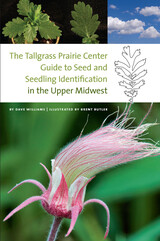 The Tallgrass Prairie Center Guide to Seed and Seedling Identification in the Upper Midwest
Dave Williams
University of Iowa Press, 2010 Settlers crossing the tallgrass prairie in the early 1800s were greeted by a seemingly endless landscape of wildflowers and grasses, one of the most diverse ecosystems on our planet. Today, although the tallgrass prairie has been reduced to a tiny percentage of its former expanse, people are working to restore and reconstruct prairie communities. This lavishly illustrated guide to seeds and seedlings, crafted by Tallgrass Prairie Center botanist Dave Williams and illustrator Brent Butler, will insure that everyone from urban gardeners to grassland managers can properly identify and germinate seventy-two species of tallgrass wildflowers and grasses in eastern North Dakota, eastern South Dakota, southwestern Minnesota, southwestern Wisconsin, northern Illinois, northwestern Indiana, Iowa, eastern Nebraska, eastern Kansas, northwestern Missouri, and eastern Oklahoma. Williams has created a brilliant, nearly foolproof system of identification and verification. Two primary keys lead to eleven secondary keys that link to characteristic groups of tallgrass plants: seven groups for wildflowers and four groups for grasses. To identify a seedling, use the primary key to discover its place in the secondary key, then turn to that characteristic group to find your seedling. Circles on each full seedling photograph correspond to close-up photographs; triangles on these close-ups illustrate information in the text to further pinpoint identification. Drawings of leaves illuminate exact identification, and enlarged photographs of each seed provide yet another way to confirm identification. Thousands of seeds were sprouted in the Tallgrass Prairie Center’s greenhouse to provide seedlings close in size and development to those grown in the field near the end of their first season; research and photography took place over four years. Williams’s text for each species includes a thorough description, a comparison of similar species, and guidance for germination and growth. A complete glossary supports the text, which is concise but detailed enough to be accessible to beginning prairie enthusiasts. Anyone in the Upper Midwest who wishes to preserve the native vegetation of prairie remnants or reconstruct a tallgrass prairie of whatever size—from home gardens to schoolyards to roadsides to large acreages—will benefit from the hundreds of photographs and drawings and the precise text in this meticulously prepared guide.
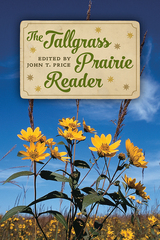 The Tallgrass Prairie Reader
John T. Price
University of Iowa Press, 2014 The tallgrass prairie of the early 1800s, a beautiful and seemingly endless landscape of wildflowers and grasses, is now a tiny remnant of its former expanse. As a literary landscape, with much of the American environmental imagination focused on a mainstream notion of more spectacular examples of wild beauty, tallgrass is even more neglected. Prairie author and advocate John T. Price wondered what it would take to restore tallgrass prairie to its rightful place at the center of our collective identity.
The answer to that question is his Tallgrass Prairie Reader, a first-of-its-kind collection of literature from and about the tallgrass bioregion. Focusing on autobiographical nonfiction in a wide variety of forms, voices, and approaches—including adventure narrative, spiritual reflection, childhood memoir, Native American perspectives, literary natural history, humor, travel writing and reportage—he honors the ecological diversity of tallgrass itself and provides a range of models for nature writers and students.
The chronological arrangement allows readers to experience tallgrass through the eyes and imaginations of forty-two authors from the nineteenth to the twenty-first centuries. Writings by very early explorers are followed by works of nineteenth-century authors that reflect the fear, awe, reverence, and thrill of adventure rampant at the time. After 1900, following the destruction of the majority of tallgrass, much of the writing became nostalgic, elegiac, and mythic. A new environmental consciousness asserted itself midcentury, as personal responses to tallgrass were increasingly influenced by larger ecological perspectives. Preservation and restoration—informed by hard science—emerged as major themes. Early twenty-first-century writings demonstrate an awareness of tallgrass environmental history and the need for citizens, including writers, to remember and to help save our once magnificent prairies.
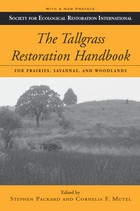 The Tallgrass Restoration Handbook: For Prairies, Savannas, and Woodlands
Edited by Stephen Packard and Cornelia F. Mutel
Island Press, 2005 TheTallgrass Restoration Handbook is a hands-on manual that provides a detailed account of what has been learned about the art and science of prairie restoration and the application of that knowledge to restoration projects throughout the world. Chapters provide guidance on all aspects of the restoration process, from conceptualization and planning to execution and monitoring. Appendixes present hard-to-find data on plants and animals of the prairies, seed collection dates, propagation methods, sources of seeds and equipment, and more. Also included is a key to restoration options that provides detailed instructions for specific types of projects and a comprehensive glossary of restoration terms. Written by those whose primary work is actually the making of prairies, The Tallgrass Restoration Handbook explores a myriad of restoration philosophies and techniques and is an essential resource for anyone working to nurture our once vibrant native landscapes back to a state of health.
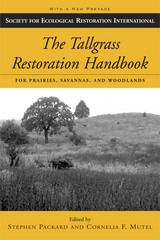 The Tallgrass Restoration Handbook: For Prairies, Savannas, and Woodlands
Edited by Stephen Packard and Cornelia F. Mutel
Island Press, 1997 Prairies are among the most severely degraded ecosystems on the North American continent, with virtually no original prairie land extant in a pristine state. Because of the amount and severity of environmental damage visited upon them, prairies have become a proving ground for the fledgling craft of ecological restoration.The restoration of ecosystems is a practical science, with little theoretical knowledge available to guide the work of practitioners. Information is acquired primarily through an arduous process of trial and error, and the need for sharing information is immense. The Tallgrass Restoration Handbook is thus an essential contribution to the literature.The book is a hands-on manual that provides a detailed account of what has been learned about the art and science of prairie restoration and the application of that knowledge to restoration projects throughout the world. Chapters provide guidance on all aspects of the restoration process, from conceptualization and planning, to execution and monitoring. Chapters cover: conserving biodiversity restoring populations of rare plants plowing and seeding obtaining and processing seeds conducting burns controlling invasive plants animal populations monitoring vegetation and more Other resources include a key to restoration options that provides detailed instructions for specific types of projects and a comprehensive glossary of restoration terms. Appendixes present hard-to-find data on plants and animals of the prairies, seed collection dates, propagation methods, sources of seeds and equipment, and more.The Tallgrass Restoration Handbook is a state-of-the-art compendium that can serve a vital role as a sort of "parts catalog and repair manual" for the tallgrass prairies and oak openings of the Midwest. Written by those whose primary work is actually the making of prairies, it explores a myriad of restoration philosophies and techniques and is an essential resource for anyone working to nurture our once-vibrant native landscapes to a state of health.
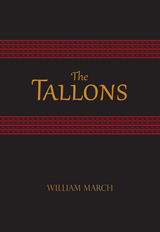 The Tallons
William March
University of Alabama Press, 1964 William March's debut novel, Company K, introduced him to the reading public as a gifted writer of modern fiction. Of that World War I classic, Graham Greene wrote: "It is the only war book I have read which has found a new form to fit the novelty of the protest. The prose is bare, lucid, without literary echoes." After Company K, March brought his same unerring style to a cycle of novels and short stories–his "Pearl County" series–inspired in part by his childhood in the vicinity of Mobile, Alabama. The University of Alabama Press is pleased to be bringing these three novels back into print.
In The Tallons, the second novel in the "Pearl County" series, March tells the story of two farm boys, Andrew and Jim Tallon. Their placid and predictable life is upended by a girl from Georgia, Myrtle Bickerstaff. The conflict which engulfs these three arises from a series of carefully chosen and extraordinarily telling incidents to a dramatic climax which will be remembered long after the book is set aside. March framed the novel as "a study in paranoia" and to the end of his life considered it one of his strongest works.
The Talmud of the Land of Israel, Volume 1: Berakhot
Jacob Neusner, General Editor
University of Chicago Press, 1989 Edited by the acclaimed scholar Jacob Neusner, this thirty-five volume English translation of the Talmud Yerushalmi has been hailed by the Jewish Spectator as a "project...of immense benefit to students of rabbinic Judaism."
The Talmud of the Land of Israel, Volume 10: Orlah and Bikkurim
Jacob Neusner, General Editor
University of Chicago Press, 1991 Edited by the acclaimed scholar Jacob Neusner, this thirty-five volume English translation of the Talmud Yerushalmi has been hailed by the Jewish Spectator as a "project...of immense benefit to students of rabbinic Judaism."
The Talmud of the Land of Israel, Volume 11: Shabbat
Jacob Neusner, General Editor
University of Chicago Press, 1991 Edited by the acclaimed scholar Jacob Neusner, this thirty-five volume English translation of the Talmud Yerushalmi has been hailed by the Jewish Spectator as a "project...of immense benefit to students of rabbinic Judaism."
The Talmud of the Land of Israel, Volume 12: Erubin
Jacob Neusner, General Editor
University of Chicago Press, 1990 Edited by the acclaimed scholar Jacob Neusner, this thirty-five volume English translation of the Talmud Yerushalmi has been hailed by the Jewish Spectator as a "project...of immense benefit to students of rabbinic Judaism."
The Talmud of the Land of Israel, Volume 13: Yerushalmi Pesahim
Jacob Neusner, General Editor
University of Chicago Press, 1995 With the publication of Yerushalmi Pesahim the University of Chicago Press completes a landmark edition of the Palestinian Talmud, The Talmud of the Land of Israel: A Preliminary Translation and Explanation. Edited by the acclaimed scholar Jacob Neusner, this thirty-five volume English translation of the Talmud Yerushalmi has been hailed by the Jewish Spectator as a "project...of immense benefit to students of rabbinic Judaism."
Yerushalmi Pesahim details the specific requirements regarding the preparation for Passover, the Passover sacrifice, and the Seder. Commenting on the many, often contradictory, prescriptions in Exodus, Leviticus, Numbers, and Deuteronomy, this tractate is an important part of a long tradition of interpretation regarding Passover.
The Talmud of the Land of Israel, Volume 14: Yoma
Jacob Neusner, General Editor
University of Chicago Press, 1991 Edited by the acclaimed scholar Jacob Neusner, this thirty-five volume English translation of the Talmud Yerushalmi has been hailed by the Jewish Spectator as a "project...of immense benefit to students of rabbinic Judaism."
The Talmud of the Land of Israel, Volume 15: Sheqalim
Jacob Neusner, General Editor
University of Chicago Press, 1990 Edited by the acclaimed scholar Jacob Neusner, this thirty-five volume English translation of the Talmud Yerushalmi has been hailed by the Jewish Spectator as a "project...of immense benefit to students of rabbinic Judaism."
The Talmud of the Land of Israel, Volume 16: Rosh Hashanah
Jacob Neusner, General Editor
University of Chicago Press, 1988 Edited by the acclaimed scholar Jacob Neusner, this thirty-five volume English translation of the Talmud Yerushalmi has been hailed by the Jewish Spectator as a "project...of immense benefit to students of rabbinic Judaism."
The Talmud of the Land of Israel, Volume 17: Sukkah
Jacob Neusner, General Editor
University of Chicago Press, 1988 Edited by the acclaimed scholar Jacob Neusner, this thirty-five volume English translation of the Talmud Yerushalmi has been hailed by the Jewish Spectator as a "project...of immense benefit to students of rabbinic Judaism."
The Talmud of the Land of Israel, Volume 18: Besah and Taanit
Jacob Neusner, General Editor
University of Chicago Press, 1987 Edited by the acclaimed scholar Jacob Neusner, this thirty-five volume English translation of the Talmud Yerushalmi has been hailed by the Jewish Spectator as a "project...of immense benefit to students of rabbinic Judaism."
The Talmud of the Land of Israel, Volume 19: Megillah
Jacob Neusner, General Editor
University of Chicago Press, 1987 Edited by the acclaimed scholar Jacob Neusner, this thirty-five volume English translation of the Talmud Yerushalmi has been hailed by the Jewish Spectator as a "project...of immense benefit to students of rabbinic Judaism."
The Talmud of the Land of Israel, Volume 2: Yerushalmi Peah
Jacob Neusner, General Editor
University of Chicago Press, 1990 Edited by the acclaimed scholar Jacob Neusner, this thirty-five volume English translation of the Talmud Yerushalmi has been hailed by the Jewish Spectator as a "project...of immense benefit to students of rabbinic Judaism."
The Talmud of the Land of Israel, Volume 20: Hagigah and Moed Qatan
Jacob Neusner, General Editor
University of Chicago Press, 1986 Edited by the acclaimed scholar Jacob Neusner, this thirty-five volume English translation of the Talmud Yerushalmi has been hailed by the Jewish Spectator as a "project...of immense benefit to students of rabbinic Judaism."
The Talmud of the Land of Israel, Volume 21: Yebamot
Jacob Neusner, General Editor
University of Chicago Press, 1987 Edited by the acclaimed scholar Jacob Neusner, this thirty-five volume English translation of the Talmud Yerushalmi has been hailed by the Jewish Spectator as a "project...of immense benefit to students of rabbinic Judaism."
The Talmud of the Land of Israel, Volume 22: Ketubot
Jacob Neusner, General Editor
University of Chicago Press, 1985 Edited by the acclaimed scholar Jacob Neusner, this thirty-five volume English translation of the Talmud Yerushalmi has been hailed by the Jewish Spectator as a "project...of immense benefit to students of rabbinic Judaism."
The Talmud of the Land of Israel, Volume 23: Nedarim
Jacob Neusner, General Editor
University of Chicago Press, 1985 Edited by the acclaimed scholar Jacob Neusner, this thirty-five volume English translation of the Talmud Yerushalmi has been hailed by the Jewish Spectator as a "project...of immense benefit to students of rabbinic Judaism."
The Talmud of the Land of Israel, Volume 24: Nazir
Jacob Neusner, General Editor
University of Chicago Press, 1985 Edited by the acclaimed scholar Jacob Neusner, this thirty-five volume English translation of the Talmud Yerushalmi has been hailed by the Jewish Spectator as a "project...of immense benefit to students of rabbinic Judaism."
The Talmud of the Land of Israel, Volume 25: Gittin
Jacob Neusner, General Editor
University of Chicago Press, 1985 Edited by the acclaimed scholar Jacob Neusner, this thirty-five volume English translation of the Talmud Yerushalmi has been hailed by the Jewish Spectator as a "project...of immense benefit to students of rabbinic Judaism."
The Talmud of the Land of Israel, Volume 26: Qiddushin
Jacob Neusner, General Editor
University of Chicago Press, 1984 Edited by the acclaimed scholar Jacob Neusner, this thirty-five volume English translation of the Talmud Yerushalmi has been hailed by the Jewish Spectator as a "project...of immense benefit to students of rabbinic Judaism."
The Talmud of the Land of Israel, Volume 27: Sotah
Jacob Neusner, General Editor
University of Chicago Press, 1984 Edited by the acclaimed scholar Jacob Neusner, this thirty-five volume English translation of the Talmud Yerushalmi has been hailed by the Jewish Spectator as a "project...of immense benefit to students of rabbinic Judaism."
The Talmud of the Land of Israel, Volume 28: Baba Qamma
Jacob Neusner, General Editor
University of Chicago Press, 1984 Edited by the acclaimed scholar Jacob Neusner, this thirty-five volume English translation of the Talmud Yerushalmi has been hailed by the Jewish Spectator as a "project...of immense benefit to students of rabbinic Judaism."
The Talmud of the Land of Israel, Volume 29: Baba Mesia
Jacob Neusner, General Editor
University of Chicago Press, 1984 Edited by the acclaimed scholar Jacob Neusner, this thirty-five volume English translation of the Talmud Yerushalmi has been hailed by the Jewish Spectator as a "project...of immense benefit to students of rabbinic Judaism."
The Talmud of the Land of Israel, Volume 3: Demai
Jacob Neusner, General Editor
University of Chicago Press, 1993 Edited by the acclaimed scholar Jacob Neusner, this thirty-five volume English translation of the Talmud Yerushalmi has been hailed by the Jewish Spectator as a "project...of immense benefit to students of rabbinic Judaism."
The Talmud of the Land of Israel, Volume 30: Baba Batra
Jacob Neusner, General Editor
University of Chicago Press, 1984 Edited by the acclaimed scholar Jacob Neusner, this thirty-five volume English translation of the Talmud Yerushalmi has been hailed by the Jewish Spectator as a "project...of immense benefit to students of rabbinic Judaism."
The Talmud of the Land of Israel, Volume 31: Sanhedrin and Makkot
Jacob Neusner, General Editor
University of Chicago Press, 1984 Edited by the acclaimed scholar Jacob Neusner, this thirty-five volume English translation of the Talmud Yerushalmi has been hailed by the Jewish Spectator as a "project...of immense benefit to students of rabbinic Judaism."
The Talmud of the Land of Israel, Volume 33: Abodah Zarah
Jacob Neusner, General Editor
University of Chicago Press, 1982 Edited by the acclaimed scholar Jacob Neusner, this thirty-five volume English translation of the Talmud Yerushalmi has been hailed by the Jewish Spectator as a "project...of immense benefit to students of rabbinic Judaism."
The Talmud of the Land of Israel, Volume 34: Horayat and Niddah
Jacob Neusner, General Editor
University of Chicago Press, 1982 Edited by the acclaimed scholar Jacob Neusner, this thirty-five volume English translation of the Talmud Yerushalmi has been hailed by the Jewish Spectator as a "project...of immense benefit to students of rabbinic Judaism."
The Talmud of the Land of Israel, Volume 35: Introduction. Taxonomy
Jacob Neusner, General Editor
University of Chicago Press, 1984 Edited by the acclaimed scholar Jacob Neusner, this thirty-five volume English translation of the Talmud Yerushalmi has been hailed by the Jewish Spectator as a "project...of immense benefit to students of rabbinic Judaism."
The Talmud of the Land of Israel, Volume 4: Kilayim
Jacob Neusner, General Editor
University of Chicago Press, 1991 Edited by the acclaimed scholar Jacob Neusner, this thirty-five volume English translation of the Talmud Yerushalmi has been hailed by the Jewish Spectator as a "project...of immense benefit to students of rabbinic Judaism."
The Talmud of the Land of Israel, Volume 5: Shebiit
Jacob Neusner, General Editor
University of Chicago Press, 1991 Edited by the acclaimed scholar Jacob Neusner, this thirty-five volume English translation of the Talmud Yerushalmi has been hailed by the Jewish Spectator as a "project...of immense benefit to students of rabbinic Judaism."
The Talmud of the Land of Israel, Volume 6: Terumot
Jacob Neusner, General Editor
University of Chicago Press, 1987 Edited by the acclaimed scholar Jacob Neusner, this thirty-five volume English translation of the Talmud Yerushalmi has been hailed by the Jewish Spectator as a "project...of immense benefit to students of rabbinic Judaism."
The Talmud of the Land of Israel, Volume 7: Maaserot
Jacob Neusner, General Editor
University of Chicago Press, 1987 Edited by the acclaimed scholar Jacob Neusner, this thirty-five volume English translation of the Talmud Yerushalmi has been hailed by the Jewish Spectator as a "project...of immense benefit to students of rabbinic Judaism."
The Talmud of the Land of Israel, Volume 8: Maaser Sheni
Jacob Neusner, General Editor
University of Chicago Press, 1993 Edited by the acclaimed scholar Jacob Neusner, this thirty-five volume English translation of the Talmud Yerushalmi has been hailed by the Jewish Spectator as a "project...of immense benefit to students of rabbinic Judaism."
The Talmud of the Land of Israel, Volume 9: Hallah
Jacob Neusner, General Editor
University of Chicago Press, 1991 Edited by the acclaimed scholar Jacob Neusner, this thirty-five volume English translation of the Talmud Yerushalmi has been hailed by the Jewish Spectator as a "project...of immense benefit to students of rabbinic Judaism."
 Tamangur
Leta Semadeni
Seagull Books, 2025 A hauntingly beautiful debut novel that interweaves grief, memory, and the mystical realm of an ancient forest through eighty-four poignant vignettes.
Romansh poet Leta Semadeni’s debut novel, Tamangur, is a multifaceted gem that delves into the shadowed depths of a remote valley in the Engadin Alps. More than a setting, the ancient stone pine forest of Tamangur serves as a mystical realm, a Valhalla for hunters and their kin, where the living brush against the world of the dead.
A richly woven narrative, Tamangur unfolds through eighty-four interlocking vignettes. We follow an unnamed young girl, referred to only as “the child,” and her grandmother as they navigate their shared grief. The loss of the girl’s beloved grandfather and younger brother casts a long shadow, with the child believing she is to blame for her brother’s death—a burden that has led her parents to abandon her. The small village they inhabit is populated by a cast of quirky characters: Elsa, who passionately loves the absent Elvis; a seamstress who steals others’ memories; a brooding chimney sweep; and a rude goat. Amidst the sorrow, these oddballs form a patchwork family, softening the harsh edges of fate with their peculiar charm.
Semadeni’s prose is crystalline and evocative, blending the poignant with the absurd in a way that captures the heart and imagination. Tamangur is a haunting exploration of loss, memory, and the fragile connections that bind us.
 Tamarack River Ghost: A Novel
Jerry Apps
University of Wisconsin Press, 2012 When journalist Josh Wittmore moves from the Illinois bureau of Farm Country News to the newspaper’s national office in Wisconsin, he encounters the biggest story of his young career—just as the paper’s finances may lead to its closure.
Josh’s big story is that a corporation that plans to establish an enormous hog farm has bought a lot of land along the Tamarack River in bucolic Ames County. Some of the local residents and officials are excited about the jobs and tax revenues that the big farm will bring, while others worry about truck traffic, porcine aromas, and manure runoff polluting the river. And how would the arrival of a large agribusiness affect life and traditions in this tightly knit rural community of family farmers? Josh strives to provide impartial agricultural reporting, even as his newspaper is replaced by a new Internet-only version owned by a former New York investment banker. And it seems that there may be another force in play: the vengeful ghost of a drowned logger who locals say haunts the valley of the Tamarack River.
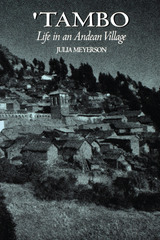 Tambo: Life in an Andean Village
By Julia Meyerson
University of Texas Press, 1990 Perhaps the best way to sharpen one's power's of observation is to be a stranger in a strange land. Julia Meyerson was one such stranger during a year in the village of 'Tambo, Peru, where her husband was conducting anthropological fieldwork. Though sometimes overwhelmed by the differences between Quechua and North American culture, she still sought eagerly to understand the lifeways of 'Tambo and to find her place in the village. Her vivid observations, recorded in this field journal, admirably follow Henry James's advice: "Try to be one of the people upon whom nothing is lost." With an artist's eye, Meyerson records the daily life of 'Tambo—the cycles of planting and harvest, the round of religious and cultural festivals, her tentative beginnings of friendship and understanding with the Tambinos. The journal charts her progress from tolerated outsider to accepted friend as she and her husband learn and earn, the roles of daughter and son in their adopted family. With its wealth of ethnographic detail, especially concerning the lives of Andean women, 'Tambo will have great value for students of Latin American anthropology. In addition, scholars preparing to do fieldwork anywhere will find it a realistic account of both the hardships and the rewards of such study.
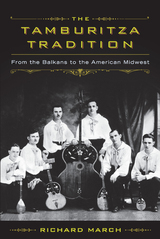 The Tamburitza Tradition: From the Balkans to the American Midwest
Richard March
University of Wisconsin Press, 2013 The Tamburitza Tradition is a lively and well-illustrated comprehensive introduction to a Balkan folk music that now also thrives in communities throughout Europe, the Americas, and Australia. Tamburitza features acoustic stringed instruments, ranging in size from tamburas as small as a ukulele to ones as large as a bass viol. Folklorist Richard March documents the centuries-old origins and development of the tradition, including its intertwining with nationalist and ethnic symbolism. The music survived the complex politics of nineteenth-century Europe but remains a point of contention today. In Croatia, tamburitza is strongly associated with national identity and supported by an artistic and educational infrastructure. Serbia is proud of its outstanding performers and composers who have influenced tamburitza bands on four continents. In the United States, tamburitza was brought by Balkan immigrants in the nineteenth century and has become a flourishing American ethnic music with its own set of representational politics. Combining historical research with in-depth interviews and extensive participant-observer description, The Tamburitza Tradition reveals a dynamic and expressive music tradition on both sides of the Atlantic and beyond, illuminating the cultures and societies from which it has emerged.
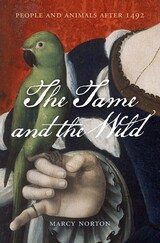 The Tame and the Wild: People and Animals after 1492
Marcy Norton
Harvard University Press, 2023 A dramatic new interpretation of the encounter between Europe and the Americas reveals the crucial role of animals in the shaping of the modern world.
When the first European colonizers arrived in the Americas, they were utterly dependent on the dogs and horses who assisted them in military campaigns as well as the livestock who provided them with food and labor. These settlers were convinced that their use of domesticated animals made them superior to Indigenous peoples, who did not practice livestock agriculture. In The Tame and the Wild, however, Marcy Norton shows that Indigenous ways of relating to animals were as sophisticated—and consequential—as those developed by other peoples across the Atlantic.
Like Europeans, Indigenous people throughout the Caribbean, Amazonia, and Mexico hunted wild animals. Yet, instead of raising domesticated livestock, Indigenous communities engaged in familiarization: they captured and tamed wild animals—from monkeys and parrots to sloths and manatees—whom they made into kin. Familiarization not only affected Indigenous responses to the invasions but also shaped European culture by influencing natural sciences and the emergence of the modern pet.
A sweeping history of human-animal relationships in the centuries after 1492, The Tame and the Wild explains the origins of a contemporary paradox: the fact that humans continue to create enormous suffering for some animals while enjoying companionship with others.
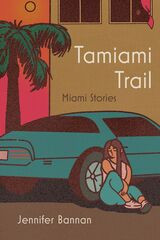 Tamiami Trail: Miami Stories
Jennifer Bannan
Carnegie Mellon University Press, 2025 Eighteen unforgettable stories of women navigating the beauty and chaos of Miami.
The Tamiami Trail cuts through the contradictions of Miami: a city shaped by swamps and skyscrapers, violence and desire. In Tamiami Trail: Miami Stories, Jennifer Bannan brings us eighteen vivid portraits of women navigating this teeming, volatile landscape.
An adolescent trapped in a toxic relationship. A middle-aged woman entangled with a reckless boy. A marketing executive profiting off the chaos of hurricanes. These women—mothers, daughters, lovers—take their chances in a world where environmental and personal disasters collide, where the ocean’s expanse mirrors the risks they take with their own lives.
Steamy, sharp, and deeply human, Tamiami Trail depicts the beauty and brutality of Miami, evoking its lush landscapes and relentless energy. With wit and sharp insight, Bannan maps the unruly desires that drive her unforgettable characters and the city that shapes them.
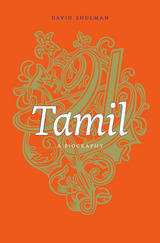 Tamil: A Biography
David Shulman
Harvard University Press, 2016 Spoken by eighty million people in South Asia and a diaspora that stretches across the globe, Tamil is one of the great world languages, and one of the few ancient languages that survives as a mother tongue for so many speakers. David Shulman presents a comprehensive cultural history of Tamil—language, literature, and civilization—emphasizing how Tamil speakers and poets have understood the unique features of their language over its long history. Impetuous, musical, whimsical, in constant flux, Tamil is a living entity, and this is its biography.
Two stories animate Shulman’s narrative. The first concerns the evolution of Tamil’s distinctive modes of speaking, thinking, and singing. The second describes Tamil’s major expressive themes, the stunning poems of love and war known as Sangam poetry, and Tamil’s influence as a shaping force within Hinduism. Shulman tracks Tamil from its earliest traces at the end of the first millennium BCE through the classical period, 850 to 1200 CE, when Tamil-speaking rulers held sway over southern India, and into late-medieval and modern times, including the deeply contentious politics that overshadow Tamil today.
Tamil is more than a language, Shulman says. It is a body of knowledge, much of it intrinsic to an ancient culture and sensibility. “Tamil” can mean both “knowing how to love”—in the manner of classical love poetry—and “being a civilized person.” It is thus a kind of grammar, not merely of the language in its spoken and written forms but of the creative potential of its speakers.
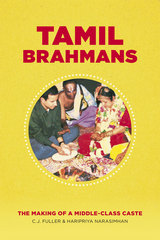 Tamil Brahmans: The Making of a Middle-Class Caste
C. J. Fuller and Haripriya Narasimhan
University of Chicago Press, 2014 A cruise along the streets of Chennai—or Silicon Valley—filled with professional young Indian men and women, reveals the new face of India. In the twenty-first century, Indians have acquired a new kind of global visibility, one of rapid economic advancement and, in the information technology industry, spectacular prowess. In this book, C. J. Fuller and Haripriya Narasimhan examine one particularly striking group who have taken part in this development: Tamil Brahmans—a formerly traditional, rural, high-caste elite who have transformed themselves into a new middle-class caste in India, the United States, and elsewhere.
Fuller and Narasimhan offer one of the most comprehensive looks at Tamil Brahmans around the world to date. They examine Brahman migration from rural to urban areas, more recent transnational migration, and how the Brahman way of life has translated to both Indian cities and American suburbs. They look at modern education and the new employment opportunities afforded by engineering and IT. They examine how Sanskritic Hinduism and traditional music and dance have shaped Tamil Brahmans’ particular middle-class sensibilities and how middle-class status is related to the changing position of women. Above all, they explore the complex relationship between class and caste systems and the ways in which hierarchy has persisted in modernized India.
The Tamil Veda: Pillan's Interpretation of the Tiruvaymoli
John Carman and Vasudha Narayanan
University of Chicago Press, 1989 In this multifaceted work, John Carman and Vasudha Narayanan clarify historical developments in South Asian religion and make important contributions to the methodology of textual interpretation and the comparative study of world religions.
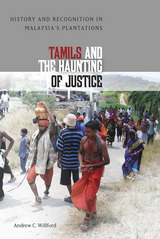 Tamils and the Haunting of Justice: History and Recognition in Malaysia's Plantations
Andrew C. Willford
University of Hawaii Press, 2014 In 2006 dejected members of the Bukit Jalil Estate community faced eviction from their homes in Kuala Lumpur where they had lived for generations. City officials classified plantation residents as squatters and, unaware of years of toil, attachment to the land, and past official promises, questioned any right they might have to stay, wondering “How can there be a plantation in Kuala Lumpur?”
This story epitomizes the dilemma faced by Malaysian Tamils in recent years as they confront the moment when the plantation system where they have lived and worked for generations finally collapses. Foreign workers from Indonesia and Bangladesh have been brought in to replace Tamil workers to cut labor costs. As the new migrant workers do not bring their whole families with them, the community structures—schools, temples, churches, community halls, recreational fields—need no longer be sustained, allowing more land to be converted to mechanized palm oil production or lucrative housing developments. In short, the old, long-term community-based model of rubber plantation production introduced by British and French companies in colonial Malaya has been replaced by a model based upon migrant labor, mechanization, and a gradual contraction of the plantation economy. Tamils find themselves increasingly resentful of the fact that lands that were developed and populated by their ancestors are now claimed by Malays as their own; and that the land use patterns in these new townships, are increasingly hostile to the most symbolic vestiges of the Tamil and Hindu presence, the temples. In addition to issues pertaining to land, legal cases surrounding religious conversion have exacerbated a sense of insecurity among Tamil Hindus.
Based on seventeen months of ethnographic fieldwork, this compelling book is about much more than the fast-approaching end to a way of life. Tamils and the Haunting of Justice addresses critical issues in the study of race and ethnicity. It is a study of how notions of justice, as imagined by an aggrieved minority, complicate legal demarcations of ethnic difference in post colonial states. Through its ethnographic breadth, it demonstrates which strategies, as enacted by local communities in conjunction with NGOs and legal advisors/activists, have been most “successful” in navigating the legal and political system of ethnic entitlement and compensation. It shows how, through a variety of strategies, Tamils try to access justice beyond the law—sometimes by using the law, and sometimes by turning to religious symbols and rituals in the murky space between law and justice. The book will thus appeal not only to scholars of Southeast Asia and the Indian diaspora, but also to ethnic studies and development scholars and those interested in postcolonial nationalism.
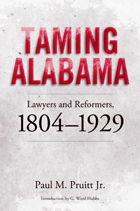 Taming Alabama: Lawyers and Reformers, 1804-1929
Paul M. Pruitt, introduction by G. Ward Hubbs
University of Alabama Press, 2010 Taming Alabama focuses on persons and groups who sought to bring about reforms in the political, legal, and social worlds of Alabama. Most of the subjects of these essays accepted the fundamental values of nineteenth and early twentieth century white southern society; and all believed, or came to believe, in the transforming power of law. As a starting point in creating the groundwork of genuine civility and progress in the state, these reformers insisted on equal treatment and due process in elections, allocation of resources, and legal proceedings. To an educator like Julia Tutwiler or a clergyman like James F. Smith, due process was a question of simple fairness or Christian principle. To lawyers like Benjamin F. Porter, Thomas Goode Jones, or Henry D. Clayton, devotion to due process was part of the true religion of the common law. To a former Populist radical like Joseph C. Manning, due process and a free ballot were requisites for the transformation of society.
 Taming Manhattan: Environmental Battles in the Antebellum City
Catherine McNeur
Harvard University Press, 2014 George Perkins Marsh Prize, American Society for Environmental History
VSNY Book Award, New York Metropolitan Chapter of the Victorian Society in America
Hornblower Award for a First Book, New York Society Library
James Broussard Best First Book Prize, Society for Historians of the Early American Republic
With pigs roaming the streets and cows foraging in the Battery, antebellum Manhattan would have been unrecognizable to inhabitants of today’s sprawling metropolis. Fruits and vegetables came from small market gardens in the city, and manure piled high on streets and docks was gold to nearby farmers. But as Catherine McNeur reveals in this environmental history of Gotham, a battle to control the boundaries between city and country was already being waged, and the winners would take dramatic steps to outlaw New York’s wild side.
“[A] fine book which make[s] a real contribution to urban biography.”
—Joseph Rykwert, Times Literary Supplement
“Tells an odd story in lively prose…The city McNeur depicts in Taming Manhattan is the pestiferous obverse of the belle epoque city of Henry James and Edith Wharton that sits comfortably in many imaginations…[Taming Manhattan] is a smart book that engages in the old fashioned business of trying to harvest lessons for the present from the past.”
—Alexander Nazaryan, New York Times
 The Taming of Free Speech: America’s Civil Liberties Compromise
Laura Weinrib
Harvard University Press, 2016 In the early decades of the twentieth century, business leaders condemned civil liberties as masks for subversive activity, while labor sympathizers denounced the courts as shills for industrial interests. But by the Second World War, prominent figures in both camps celebrated the judiciary for protecting freedom of speech. In this strikingly original history, Laura Weinrib illustrates how a surprising coalition of lawyers and activists made judicial enforcement of the Bill of Rights a defining feature of American democracy.
The Taming of Free Speech traces our understanding of civil liberties to conflict between 1910 and 1940 over workers’ right to strike. As self-proclaimed partisans in the class war, the founders of the American Civil Liberties Union promoted a bold vision of free speech that encompassed unrestricted picketing and boycotts. Over time, however, they subdued their rhetoric to attract adherents and prevail in court. At the height of the New Deal, many liberals opposed the ACLU’s litigation strategy, fearing it would legitimize a judiciary they deemed too friendly to corporations and too hostile to the administrative state. Conversely, conservatives eager to insulate industry from government regulation pivoted to embrace civil liberties, despite their radical roots. The resulting transformation in constitutional jurisprudence—often understood as a triumph for the Left—was in fact a calculated bargain.
America’s civil liberties compromise saved the courts from New Deal attack and secured free speech for labor radicals and businesses alike. Ever since, competing groups have clashed in the arena of ideas, shielded by the First Amendment.
 The Taming of Romanticism: European Literature and the Age of Biedermeier
Virgil Nemoianu
Harvard University Press, 1984 Looking at a broad spectrum of writers--English, French, German, Italian, Russian and other East Europeans--Virgil Nemoianu offers here a coherent characterization of the period 1815-1848. This he calls the era of the domestication of romanticism.
The explosive, visionary core of romanticism is seen to give way--after the defeat of Napoleon--to an expanded and softer version reflecting middle-class values. This later form of romanticism is characterized by moralizing efforts to reform society, a sentimental yearning for the tranquility of home and hearth, and persistent faith in the individual, alongside a new skepticism, shattered ideals, and consequent irony. Expanding the application of the term Biedermeier, which has been useful in describing this period in German literature, Nemoianu provides a new framework for understanding these years in a wider European context.
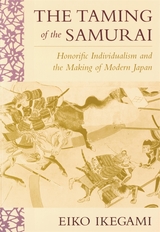 The Taming of the Samurai: Honorific Individualism and the Making of Modern Japan
Eiko Ikegami
Harvard University Press, 1995 Modern Japan offers us a view of a highly developed society with its own internal logic. Eiko Ikegami makes this logic accessible to us through a sweeping investigation into the roots of Japanese organizational structures. She accomplishes this by focusing on the diverse roles that the samurai have played in Japanese history. From their rise in ancient Japan, through their dominance as warrior lords in the medieval period, and their subsequent transformation to quasi-bureaucrats at the beginning of the Tokugawa era, the samurai held center stage in Japan until their abolishment after the opening up of Japan in the mid-nineteenth century.
This book demonstrates how Japan’s so-called harmonious collective culture is paradoxically connected with a history of conflict. Ikegami contends that contemporary Japanese culture is based upon two remarkably complementary ingredients, honorable competition and honorable collaboration. The historical roots of this situation can be found in the process of state formation, along very different lines from that seen in Europe at around the same time. The solution that emerged out of the turbulent beginnings of the Tokugawa state was a transformation of the samurai into a hereditary class of vassal-bureaucrats, a solution that would have many unexpected ramifications for subsequent centuries.
Ikegami’s approach, while sociological, draws on anthropological and historical methods to provide an answer to the question of how the Japanese managed to achieve modernity without traveling the route taken by Western countries. The result is a work of enormous depth and sensitivity that will facilitate a better understanding of, and appreciation for, Japanese society.
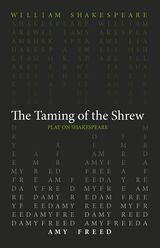 Taming of the Shrew
William Shakespeare
Arizona Center for Medieval and Renaissance Studies, 2022 Amy Freed rewrites The Taming of the Shrew, one of the more problematic plays in the Shakespeare canon.
While beloved for its sharp dialogue and witty banter, The Taming of the Shrew offers a problematic storyline that many have deemed misogynistic. The play contains insensitive gags and uneasy politics, making it difficult for modern audiences to connect with the text. Amy Freed’s new translation reactivates the original story, blowing away the dust and cobwebs. As Freed’s text reminds us, at its heart The Taming of the Shrew is a story about courage and authenticity.
This translation of The Taming of the Shrew was written as part of the Oregon Shakespeare Festival’s Play On! project, which commissioned new translations of thirty-nine Shakespeare plays. These translations present work from “The Bard” in language accessible to modern audiences while never losing the beauty of Shakespeare’s verse. Enlisting the talents of a diverse group of contemporary playwrights, screenwriters, and dramaturges from diverse backgrounds, this project reenvisions Shakespeare for the twenty-first century. These volumes make these works available for the first time in print—a new First Folio for a new era.
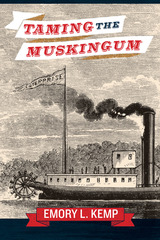 Taming the Muskingum
EMORY L. KEMP
West Virginia University Press, 2014 A tributary of the Ohio River and significant commercial route in the nineteenth century, the Muskingum River in southeastern Ohio presents a remarkable case study of how Americans have managed their waterways. In Taming the Muskingum, esteemed scholar Emory Kemp traces this history, emphasizing the engineering and construction aspects of river navigation and the fourteen related flood control dams built under the direction of the U.S. Army Corps of Engineers. Kemp’s study ranges from early settlement and navigation of the uncontrolled Muskingum to the state-of-the-art engineering projects undertaken during the New Deal to more recent conservation and recreation uses. llustrated with drawings, photographs, and maps showing many aspects of the dam and reservoir system as well as the Muskingum slackwater navigation, Taming the Muskingum is a rich evocation of a navigation system that is today recognized as a national Historical Civil Engineering Landmark.
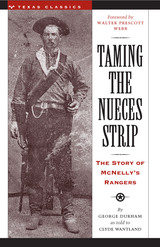 Taming the Nueces Strip: The Story of McNelly's Rangers
By George Durham as told to Clyde Wantland
University of Texas Press, 1962 Only an extraordinary Texas Ranger could have cleaned up bandit-plagued Southwest Texas, between the Nueces River and the Rio Grande, in the years following the Civil War. Thousands of raiders on horseback, some of them Anglo-Americans, regularly crossed the river from Mexico to pillage, murder, and rape. Their main objective? To steal cattle, which they herded back across the Rio Grande to sell. Honest citizens found it almost impossible to live in the Nueces Strip. In desperation, the governor of Texas called on an extraordinary man, Captain Leander M. McNelly, to take command of a Ranger company and stop these border bandits. One of McNelly's recruits for this task was George Durham, a Georgia farmboy in his teens when he joined the "Little McNellys," as the Captain's band called themselves. More than half a century later, it was George Durham, the last surviving "McNelly Ranger," who recounted the exciting tale of taming the Nueces Strip to San Antonio writer Clyde Wantland. In Durham's account, those long-ago days are brought vividly back to life. Once again the daring McNelly leads his courageous band across Southwest Texas to victories against incredible odds. With a boldness that overcame their dismayingly small number, the McNellys succeeded in bringing law and order to the untamed Nueces Strip—succeeded so well that they antagonized certain "upright" citizens who had been pocketing surreptitious dollars from the bandits' operations.
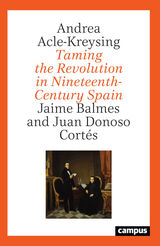 Taming the Revolution
Andrea Acle-Kreysing
Campus Verlag, 2022 An essential study of nineteenth-century Spanish political thought.
Jaime Balmes and Juan Donoso Cortés–the two most important conservative thinkers in nineteenth-century Spain–actively sought to preserve the centrality of church and monarchy in the wake of the rise of liberalism, while at the same time discrediting the stereotypical view of Spain as a backward and isolated country. Although they pursued a similar goal, their positions differed: while Balmes’ works anticipated a socially oriented Catholicism, Donoso presented Christianity as the supreme social good, incompatible with modern liberalism. In Taming the Revolution, Andrea Acle-Kreysing highlights the unresolved tensions in their works, escaping the dualistic interpretations of this period that defines tradition from modernity. This work endeavors to show how Spanish political thought was a compelling variation–rather than an aberration–of contemporary European debates.
 Taming the Troublesome Child: American Families, Child Guidance, and the Limits of Psychiatric Authority
Kathleen W. Jones
Harvard University Press, 2002 When our children act up--whether they're just moody and rebellious or taking drugs and committing crimes--our solution, so often now, is to send them to a psychiatrist or developmental psychologist for help. What makes us think this will work? How did we come to rely on psychological explanations--and corrections--for juvenile misconduct?
In Taming the Troublesome Child, these questions lead to the complex history of "child guidance," a specialized psychological service developed early in the twentieth century. Kathleen Jones puts this professional history into the context of the larger culture of age, class, and gender conflict. Using the records of Boston's Judge Baker Guidance Center from 1920 to 1945, she looks at the relationships among the social activists, doctors, psychologists, social workers, parents, and young people who met in the child guidance clinic, then follows the clinicians as they adapt delinquency work to the problems of nondelinquent children--an adaptation that often entailed a harsh critique of American mothers. Her book reveals the uses to which professionals and patients have put this interpretation of juvenile misbehavior, and the conditions that mother-blaming has imposed on social policy and private child rearing to this day.
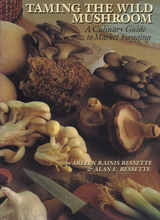 Taming the Wild Mushroom: A Culinary Guide to Market Foraging
By Arleen Rainis Bessette and Alan E. Bessette
University of Texas Press, 1993 Many mushroom hunters prefer to do their foraging in the marketplace, where all the mushrooms are clearly labeled and safely edible. With this fact in mind, Arleen and Alan Bessette have written Taming the Wild Mushroom, one of the first cooking guides devoted exclusively to choosing and preparing the mushroom species now available in many grocery stores, supermarkets, and natural and whole foods markets. A dozen wild and cultivated species are covered in the book, including White Button, King Bolete, Oyster, Chanterelle, Morel, Paddy Straw, Wood Ear, Shiitake, Enokitake, White Matsutake, Black Truffle, and Wine-cap Stropharia. Easy-to-understand descriptions and excellent color photographs of each species help market foragers choose mushrooms in peak condition. Fifty-seven original, species-specific recipes, from appetizers, soups, and salads to meat and vegetarian entrees to sauces and accompaniments, offer dozens of ways to savor the familiar and exotic flavors of these mushrooms. A mouth-watering photograph accompanies each recipe.
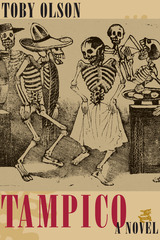 Tampico: A Novel
By Toby Olson
University of Texas Press, 2008 Four old men—John, Gino, Larry, and Frank—have been warehoused at "the Manor," a long-eroded home for the forgotten. The men take turns telling stories, stalling death as they relive pivotal parts of their pasts. Outside, the cliff crumbles and a lighthouse slips toward the sea.
John, in particular, enthralls the others with his tale of Tampico, Mexico, where he met an Indian woman named Chepa who owned a house at the edge of a mountain wilderness. She was his first love—and his first lesson in the dangers of foreign intrigue. But his is not the only memory haunted by mysteries born in Mexico. Sick of waiting for death, stirred by the shifting ground beneath their feet, the Manor's residents finally resolve to quit that place and head out for Tampico.
With inexorable pull, and exquisite scenes that could only come from Toby Olson, Tampico celebrates a sublime band of calaveras, "those skeleton messengers of mortality," who seek self-discovery even as their lives are ending.
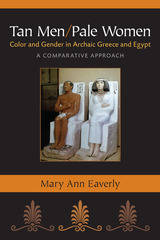 Tan Men/Pale Women: Color and Gender in Archaic Greece and Egypt, a Comparative Approach
Mary Ann Eaverly
University of Michigan Press, 2013 One of the most obvious stylistic features of Athenian black-figure vase painting is the use of color to differentiate women from men. By comparing ancient art in Egypt and Greece, Tan Men/Pale Women uncovers the complex history behind the use of color to distinguish between genders, without focusing on race. Author Mary Ann Eaverly considers the significance of this overlooked aspect of ancient art as an indicator of underlying societal ideals about the role and status of women. Such a commonplace method of gender differentiation proved to be a complex and multivalent method for expressing ideas about the relationship between men and women, a method flexible enough to encompass differing worldviews of Pharaonic Egypt and Archaic Greece. Does the standard indoor/outdoor explanation—women are light because they stay indoors—hold true everywhere, or even, in fact, in Greece? How “natural” is color-based gender differentiation, and, more critically, what relationship does color-based gender differentiation have to views about women and the construction of gender identity in the ancient societies that use it? The depiction of dark men and light women can, as in Egypt, symbolize reconcilable opposites and, as in Greece, seemingly irreconcilable opposites where women are regarded as a distinct species from men. Eaverly challenges traditional ideas about color and gender in ancient Greek painting, reveals an important strategy used by Egyptian artists to support pharaonic ideology and the role of women as complementary opposites to men, and demonstrates that rather than representing an actual difference, skin color marks a society’s ideological view of the varied roles of male and female.
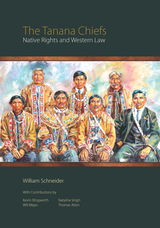 The Tanana Chiefs: Native Rights and Western Law
Edited by William Schneider
University of Alaska Press, 2018 At the turn of the twentieth century, life was changing drastically in Alaska. The gold rush brought an onslaught of white settlers to the area, railroad companies were pushing into the territory, and telegraph lines opened up new lines of communication. The Native groups who had hunted and fished on the land for more than a century realized that if they did not speak up now, they would lose their land forever.
This is the story of a historic meeting between Native Athabascan leaders and government officials, held in Fairbanks, Alaska in 1915. It was one of the first times that Native voices were part of the official record. They sought education and medical assistance, and they wanted to know what they could expect from the federal government. They hoped for a balance between preserving their way of life with seeking new opportunities under the law.
The Tanana Chiefs chronicles the efforts by Alaska Natives to gain recognition for rights under Western law and the struggles to negotiate government-to-government relationships with the federal government. It contains the first full transcript of the historic meeting as well as essays that connect that first gathering with the continued efforts of the Tanana Chiefs Conference, which continues to meet and fight for Native rights.
Tanegashima: The Arrival of Europe in Japan
Olof Lidin
National University of Singapore Press, 2002 The year 1543 marked the beginning of a new global consciousness in Japan with the arrival of storm-blown Portuguese merchants in Tanegashima Island in southern Japan. Other Portuguese rapidly followed and Japan became aware of a world beyond India. The Portuguese brought with them the musket, which was quickly copied and began to change Japanese warfare. Francis Xavier arrived in 1549 and other Christian missionaries soon after. This is not a new story but it is the first time that Japanese, Portuguese and other European accounts have been brought together and presented in English.
 T’ang Transformation Texts: A Study of the Buddhist Contribution to the Rise of Vernacular Fiction and Drama in China
Victor H. Mair
Harvard University Press, 1989 This is the most comprehensive study of pien-wen (“transformation texts” i.e., tales of metamorphosis) in any language since the manuscripts were discovered at the beginning of this century in a remote cave complex in northwest China. They are the earliest written vernacular narratives in China and are thus extremely important in the history of Chinese language and literature.
Numerous scholarly controversies have surrounded the study of the texts in the last three quarters of a century; this volume seeks to resolve some of them—the extent, origins, and formal characteristics of the texts, the meaning of pien wen, the identity of the authors who composed these popular narratives and the scribes who copied them, the relationship of the texts to oral performance, and the reasons for the apparently sudden demise of the genre around the beginning of the Sung dynasty.
This is a multi-disciplinary study that integrates findings from religious, literary, linguistic, sociological, and historical materials, carried out with intellectual rigor. It includes an extensive bibliography of relevant sources in many languages.
 Tangential Terrains: Cormac McCarthy's Geoaesthetics
Stefanie Heine
University of Nevada Press, 2026 Tangential Terrains is an ecocritical study of the work of Cormac McCarthy, focusing primarily on his depictions of the desert and inorganic nature in Blood Meridian. Close readings of previously unexamined archival manuscripts and drafts shed new light on McCarthy’s compositional processes, revealing how the development of written matter in the novel-in-progress can correspond to geological processes like erosion, erratics, stratification, and continental drift.
Blood Meridian’s emergent geoaesthetics reveals forces operating according to other-than-human principles, as literary desert terrains retain a passive resistance, or weak agency, which presents a radical disturbance of anthropocentrism, mirrored in the novel’s style. Though the mediated unstable deserts in Blood Meridian defy appropriation, they are neither untouched nor untouchable: the borderlands bear the wounds and “blood meridians” of a non-chronological history of violence, tangential to the massacres of Native American and Mexican peoples depicted in the novel.
Stefanie Heine’s reading of Blood Meridian offers a crucial contribution to and intervention in contemporary ecocriticism, Anthropocene criticism, and New Materialist theories, encouraging readers to critically rethink customary notions of entanglement, kinship, and agency.
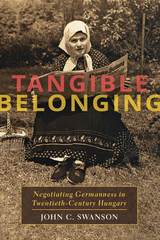 Tangible Belonging: Negotiating Germanness in Twentieth-Century Hungary
John C. Swanson
University of Pittsburgh Press, 2016 Winner, 2019 HSA Book Prize
Tangible Belonging presents a compelling historical and ethnographic study of the German speakers in Hungary, from the late nineteenth to the late twentieth century. Through this tumultuous period in European history, the Hungarian-German leadership tried to organize German-speaking villagers, Hungary tried to integrate (and later expel) them, and Germany courted them. The German speakers themselves, however, kept negotiating and renegotiating their own idiosyncratic sense of what it meant to be German. John C. Swanson’s work looks deeply into the enduring sense of tangible belonging that characterized Germanness from the perspective of rural dwellers, as well as the broader phenomenon of “minority making” in twentieth-century Europe.
The chapters reveal the experiences of Hungarian Germans through the First World War and the subsequent dissolution of Austria-Hungary; the treatment of the German minority in the newly independent Hungarian Kingdom; the rise of the racial Volksdeutsche movement and Nazi influence before and during the Second World War; the immediate aftermath of the war and the expulsions; the suppression of German identity in Hungary during the Cold War; and the fall of Communism and reinstatement of minority rights in 1993.
Throughout, Swanson offers colorful oral histories from residents of the rural Swabian villages to supplement his extensive archival research. As he shows, the definition of being a German in Hungary varies over time and according to individual interpretation, and does not delineate a single national identity. What it meant to be German was continually in flux. In Swanson’s broader perspective, defining German identity is ultimately a complex act of cognition reinforced by the tangible environment of objects, activities, and beings. As such, it endures in individual and collective mentalities despite the vicissitudes of time, history, language, and politics.
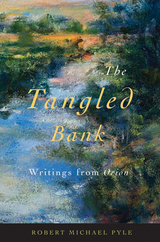 The Tangled Bank: Writings from Orion
Robert Michael Pyle
Oregon State University Press, 2012 “It is interesting to contemplate a tangled bank, clothed with many plants of many kinds, with birds singing on the bushes, with various insects flitting about, and with worms crawling through the damp earth, and to reflect that these elaborately constructed forms, so different from each other, and dependent upon each other in so complex a manner, have all been produced by laws acting around us…” —Charles Darwin, The Origin of Species Robert Michael Pyle’s popular “Tangled Bank” column appeared in fifty-two consecutive issues of Orion and Orion Afield magazines over eleven years. Each essay collected in The Tangled Bank explores Charles Darwin’s contention that the elements of such a bank, and by extension all the living world, are endlessly interesting and ever evolving. Pyle’s thoughtful and concise narratives range in subject from hops and those who love them to independent bookstores to the monarchs of Mexico. In each piece, Pyle refutes “the idea that the world is a boring place,” sharing his meticulous observations of the endless and fascinating details of the living earth.
Tangled Bylines: A Father and Son Cover the Twentieth Century
Clyde H. Farnsworth
University of Missouri Press, 2017 This memoir of father and son journalists—both named Clyde Farnsworth—draws on the unfinished autobiography of the author’s father. Largely biographical, this book can be read as a panoramic history of American newspaper journalism in the twentieth-century, covering Prohibition gangs, prison fires, and botched executions in the 1920s and 1930s, to global war, the shaping of postwar Europe and Asia, and America’s emergence from the Cold War. Tangled Bylines includes off-beat encounters with Amelia Earhart, Douglas MacArthur, Charles de Gaulle, Winston Churchill, and Simon Wiesenthal.
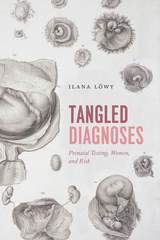 Tangled Diagnoses: Prenatal Testing, Women, and Risk
Ilana Löwy
University of Chicago Press, 2018 Since the late nineteenth century, medicine has sought to foster the birth of healthy children by attending to the bodies of pregnant women, through what we have come to call prenatal care. Women, and not their unborn children, were the initial focus of that medical attention, but prenatal diagnosis in its present form, which couples scrutiny of the fetus with the option to terminate pregnancy, came into being in the early 1970s.
Tangled Diagnoses examines the multiple consequences of the widespread diffusion of this medical innovation. Prenatal testing, Ilana Löwy argues, has become mainly a risk-management technology—the goal of which is to prevent inborn impairments, ideally through the development of efficient therapies but in practice mainly through the prevention of the birth of children with such impairments. Using scholarship, interviews, and direct observation in France and Brazil of two groups of professionals who play an especially important role in the production of knowledge about fetal development—fetopathologists and clinical geneticists—to expose the real-life dilemmas prenatal testing creates, this book will be of interest to anyone concerned with the sociopolitical conditions of biomedical innovation, the politics of women’s bodies, disability, and the ethics of modern medicine.
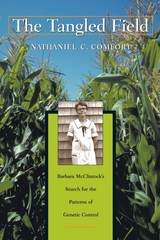 The Tangled Field: Barbara McClintock’s Search for the Patterns of Genetic Control
Nathaniel C. Comfort
Harvard University Press, 2001 This biographical study illuminates one of the most important yet misunderstood figures in the history of science. Barbara McClintock (1902-1992), a geneticist who integrated classical genetics with microscopic observations of the behavior of chromosomes, was regarded as a genius and as an unorthodox, nearly incomprehensible thinker. In 1946, she discovered mobile genetic elements, which she called "controlling elements." Thirty-seven years later, she won a Nobel Prize for this work, becoming the third woman to receive an unshared Nobel in science. Since then, McClintock has become an emblem of feminine scientific thinking and the tragedy of narrow-mindedness and bias in science.
Using McClintock's research notes, newly available correspondence, and dozens of interviews with McClintock and others, Comfort argues that McClintock's work was neither ignored in the 1950s nor wholly accepted two decades later. Nor was McClintock marginalized by scientists; throughout the decades of her alleged rejection, she remained a distinguished figure in her field. Comfort replaces the "McClintock myth" with a new story, rich with implications for our understanding of women in science and scientific creativity.
The Tangled Fire of William Faulkner
William Van O’Connor
University of Minnesota Press, 1953
The Tangled Fire of William Faulkner was first published in 1953. Minnesota Archive Editions uses digital technology to make long-unavailable books once again accessible, and are published unaltered from the original University of Minnesota Press editions.
Out of the tangled fire that is the genius of William Faulkner's fiction, this critical study draws as coherent and highly original view of the writer's achievement. By placing Faulkner in his Mississippi background and analyzing his novels and short stories in chronological sequence, O'Conner demonstrates a major thesis that sets this apart from other studies. It is his interpretation that Faulkner's fiction is not all of a piece, does not merely develop the conviction of the legend of the Old South, but is, rather, marked by diversity of theme.
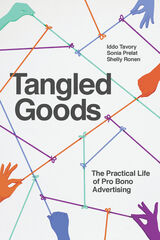 Tangled Goods: The Practical Life of Pro Bono Advertising
Iddo Tavory, Sonia Prelat and Shelly Ronen
University of Chicago Press, 2022 A novel investigation of pro bono marketing and the relationship between goods, exploring the complex moral dimensions of philanthropic advertising.
The advertising industry may seem like one of the most craven manifestations of capitalism, turning consumption into a virtue. In Tangled Goods, authors Iddo Tavory, Sonia Prelat, and Shelly Ronen consider an important dimension of the advertising industry that appears to depart from the industry’s consumerist foundations: pro bono ad campaigns. Why is an industry known for biting cynicism and cutthroat competition also an industry in which people dedicate time and effort to “doing good”?
Interviewing over seventy advertising professionals and managers, the authors trace the complicated meanings of the good in these pro bono projects. Doing something altruistic, they show, often helps employees feel more at ease working for big pharma or corporate banks. Often these projects afford them greater creative leeway than they normally have, as well as the potential for greater recognition. While the authors uncover different motivations behind pro bono work, they are more interested in considering how various notions of the good shift, with different motivations and benefits rising to the surface at different moments. This book sheds new light on how goodness and prestige interact with personal and altruistic motivations to produce value for individuals and institutions and produces a novel theory of the relationship among goods: one of the most fraught questions in sociological theory.
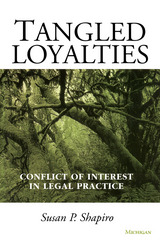 Tangled Loyalties: Conflict of Interest in Legal Practice
Susan P. Shapiro
University of Michigan Press, 2002 In Tangled Loyalties, Susan P. Shapiro charts a journey across the state of Illinois. To explore the role of conflict-of-interest in the private practice of law she looks at a wide variety of law firms, including those located near lakes, rivers, and corn fields; in strip malls, storefronts, and historic landmarks; in town squares, residential neighborhoods, deteriorating downtown areas, and glittering high rises.
This unique, empirical study examines the actual attitudes and perceptions of legal practitioners. The author discusses the realities of the profession--what lawyers face day to day, how they deal with conflicts of interest, and how those experiences vary from LaSalle Street to Wall Street to Main Street, from megafirms to solo practices. In describing how conflicts arise in their daily work, Shapiro sheds light on the nature of legal work--on clients, colleagues, law firm power and politics, economics, markets, malpractice insurance, careers, ethics, values, business judgments, and lawyers' most anguishing moments. In short, we learn what it means to be a lawyer at the end of the twentieth century.
Tangled Loyalties also looks at how these conflicts in law affect other fiduciaries--accountants, doctors, psychotherapists, journalists, and academics--and the way in which they respond to competing interests and the honoring of those interests.
Tangled Loyalties will appeal to readers interested in the legal and other professions, social institutions and relations, and issues of trust, ethics, social control and regulation.
Susan P. Shapiro is Senior Research Fellow, American Bar Foundation.
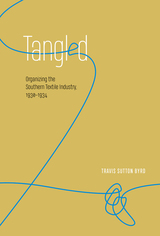 Tangled: Organizing the Southern Textile Industry, 1930–1934
Travis Sutton Byrd
University of Tennessee Press, 2018 Labor strife in piedmont mills had left eight dead in the summer of 1929, prompting the AFL–affiliated United Textile Workers of America (UTW) to strike an uneasy deal with the North Carolina governor. Their mutual goal was to root out and destroy the efforts of a rival communist organization, the National Textile Workers Union (NTWU), and thus erase Bolshevism in Dixie. The stage was set for a new round of conflict that would unfold over the next half-decade, not only in North Carolina but in several surrounding states.
In this follow-up to Unraveled, his account of the 1929 events, Travis Sutton Byrd deftly explores a complex story of labor relations, political transitions, and emergent class consciousness in the industrial South. He seeks to answer why, with the coming of the Depression and New Deal initiatives to combat it, the region proved to be such a vexing battleground for labor organizers, whether mainstream or radical. This book examines the initiation and failure of the AFL/UTW’s “Organize the South Campaign” and the attendant rise and demise of “Coalitionism”—a fusion between organized labor, progressive Republicans, and disaffected Democrats. It also documents the evolution of contradictory impulses—trade unionism and collective bargaining versus individualism and “right-to-work” doctrine—and pays special attention to the now-forgotten High Point, North Carolina, hosiery strike of 1932, which achieved its goals in remarkable fashion even though it never regularized under either the UTW or the NTWU. The story culminates in 1934, when a general strike swept the country in a desperate effort to force the reform promised by the National Recovery Act.
Drawing especially on regional newspaper accounts to show how the key actors— millhands, owners, organizers, and politicians—understood the events, Tangled is a thoroughly engrossing chronicle that carries vital lessons for today’s labor leaders and policymakers.
 The Tangled Roots of Feminism, Environmentalism, and Appalachian Literature
Elizabeth S. D. Engelhardt
Ohio University Press, 2003 Contemporaries were shocked when author Mary Noailles Murfree revealed she was a woman, but modern readers may be more surprised by her cogent discussion of community responses to unwanted development. Effie Waller Smith, an African American woman writing of her love for the Appalachian mountains, wove discussions of women's rights, racial tension, and cultural difference into her Appalachian poetry. Grace MacGowan Cooke participated in avant-garde writers' colonies with the era's literary lights and applied their progressive ideals to her fiction about the Appalachia of her youth. Emma Bell Miles, witness to poverty, industrialization, and violence against women, wrote poignant and insightful critiques of her Appalachian home.
In The Tangled Roots of Feminism, Environmentalism, and Appalachian Literature Elizabeth Engelhardt finds in all four women's writings the origins of what we recognize today as ecological feminism—a wide-reaching philosophy that values the connections between humans and nonhumans and works for social and environmental justice.
People and the land in Appalachia were also the subject of women authors with radically different approaches to mountains and their residents. Authors with progressive ideas about women's rights did not always respect the Appalachian places they were writing about or apply their ideas to all of the women in those places—but they did create hundreds of short stories, novels, letters, diaries, photographs, sketches, and poems about the mountains.
While The Tangled Roots of Feminism, Environmentalism, and Appalachian Literature ascribes much that is noble to the beginnings of the ecological feminism movement as it developed in Appalachia, it is also unyielding in its assessment of the literatures of the voyeur, tourist, and social crusader who supported status quo systems of oppression in Appalachia.
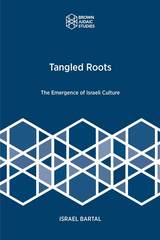 Tangled Roots: The Emergence of Israeli Culture
Israel Bartal
SBL Press, 2020 A new interpretation of the roots of Israeli culture
In Tangled Roots: The Emergence of Israeli Culture, Israel Bartal traces the history of modern Hebrew culture prior to the emergence of political Zionism. Bartal examines how traditional and modernist ideals and Western and non-European Jewish cultures merged in an unprecedented encounter between an ancient land (Israel) and a multigenerational people (the Jews). Premodern Jewish traditionalists, Palestinian locals, foreign imperial forces, and Jewish intellectuals, writers, journalists, and party functionaries each affected the Israeli culture that emerged. As this new Hebrew culture was taking shape, the memory of the recent European past played a highly influential role in shaping the image of the New Hebrew, that mythological hero who was meant to supplant the East European exilic Jew.
Features
- A critical revision of most contemporary politicized histories of Jewish nationalism
- An examination of the history of modern Hebrew culture prior to political Zionism
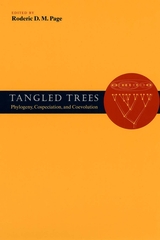 Tangled Trees: Phylogeny, Cospeciation, and Coevolution
Edited by Roderic D. M. Page
University of Chicago Press, 2002 In recent years, the use of molecular data to build phylogenetic trees and sophisticated computer-aided techniques to analyze them have led to a revolution in the study of cospeciation. Tangled Trees provides an up-to-date review and synthesis of current knowledge about phylogeny, cospeciation, and coevolution. The opening chapters present various methodological and theoretical approaches, ranging from the well-known parsimony approach to "jungles" and Bayesian statistical models. Then a series of empirical chapters discusses detailed studies of cospeciation involving vertebrate hosts and their parasites, including nematodes, viruses, and lice. Tangled Trees will be welcomed by researchers in a wide variety of fields, from parasitology and ecology to systematics and evolutionary biology.
Contributors:
Sarah Al-Tamimi, Michael A. Charleston, Dale H. Clayton, James W. Demastes, Russell D. Gray, Mark S. Hafner, John P. Huelsenbeck, J.-P. Hugot, Kevin P. Johnson, Peter Kabat, Bret Larget, Joanne Martin, Yannis Michalakis, Roderic D. M. Page, Ricardo L. Palma, Adrian M. Paterson, Susan L. Perkins, Andy Purvis, Bruce Rannala, David L. Reed, Fredrik Ronquist, Theresa A. Spradling, Jason Taylor, Michael Tristem
Tangled Web They Weave: Truth, Falsity, & Advertisers
Ivan L. Preston
University of Wisconsin Press, 1996 Written for the ordinary consumer as well as for advertisers and trade regulators, this book aims to demonstrate how advertising can better serve its audience. Ivan Preston takes us down the slippery slope, from the high ground of honest product information to the unscrupulous bottom-of-the-barrel claims that are wholly false. Along the way he documents the subtle misrepresentations, half and lesser truths, and exploitations of our gullibility that abound in contemporary advertising.
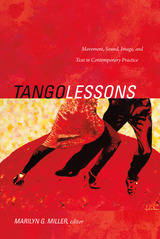 Tango Lessons: Movement, Sound, Image, and Text in Contemporary Practice
Marilyn G. Miller, ed.
Duke University Press, 2014 From its earliest manifestations on the street corners of nineteenth-century Buenos Aires to its ascendancy as a global cultural form, tango has continually exceeded the confines of the dance floor or the music hall. In Tango Lessons, scholars from Latin America and the United States explore tango's enduring vitality. The interdisciplinary group of contributors—including specialists in dance, music, anthropology, linguistics, literature, film, and fine art—take up a broad range of topics. Among these are the productive tensions between tradition and experimentation in tango nuevo, representations of tango in film and contemporary art, and the role of tango in the imagination of Jorge Luis Borges. Taken together, the essays show that tango provides a kaleidoscopic perspective on Argentina's social, cultural, and intellectual history from the late nineteenth to the early twenty-first centuries.
Contributors. Esteban Buch, Oscar Conde, Antonio Gómez, Morgan James Luker, Carolyn Merritt, Marilyn G. Miller, Fernando Rosenberg, Alejandro Susti
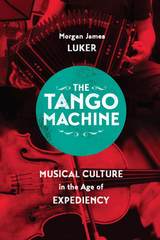 The Tango Machine: Musical Culture in the Age of Expediency
Morgan James Luker
University of Chicago Press, 2016 In Argentina, tango isn’t just the national music—it’s a national brand. But ask any contemporary Argentine if they ever really listen to it and chances are the answer is no: tango hasn’t been popular for more than fifty years. In this book, Morgan James Luker explores that odd paradox by tracing the many ways Argentina draws upon tango as a resource for a wide array of economic, social, and cultural—that is to say, non-musical—projects. In doing so, he illuminates new facets of all musical culture in an age of expediency when the value and meaning of the arts is less about the arts themselves and more about how they can be used.
Luker traces the diverse and often contradictory ways tango is used in Argentina in activities ranging from state cultural policy-making to its export abroad as a cultural emblem, from the expanding nonprofit arts sector to tango-themed urban renewal projects. He shows how projects such as these are not peripheral to an otherwise “real” tango—they are the absolutely central means by which the values of this musical culture are cultivated. By richly detailing the interdependence of aesthetic value and the regimes of cultural management, this book sheds light on core conceptual challenges facing critical music scholarship today.
The Tango Player
Christoph Hein
Northwestern University Press, 1994 Set in 1968 Leipzig, Christoph Hein's novel is the story of Dallow, an apolitical academic who has just returned to civilian life after serving twenty-one months in prison. His crime: he was the substitute piano player in a student cabaret in which seditious verses were sung. Dallow returns to a life in of loveless sex, police harassment, and brutality, revealing how a corrupt system perverts all human interaction, and how lives are ruined by malicious caprice.
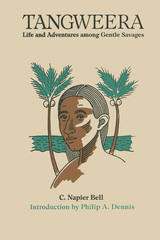 Tangweera: Life and Adventures among Gentle Savages
By C. Napier Bell
University of Texas Press, 1989 In the 1980s, conflicts between the Miskito people of Nicaragua's eastern coast and the Sandinistas drew international attention. Indeed, the Miskitos' struggle to defend their cultural autonomy and land rights points out a curious historical anomaly. This native group has long had closer ties to British and American culture than to Hispanic Nicaraguan culture. C. Napier Bell, son of a British trader, grew up on the Miskito Coast in the nineteenth century and spoke the Miskito language fluently. Tangweera, first published in 1899, is Bell's autobiographical account of his boyhood experiences. Rich in ethnographic detail, the book records an idyllic life of hunting, fishing, and trading. Bell describes the social customs and beliefs of the various Indian peoples he knew, as well as the relations among the coastal Miskito, the black creole population, and the tribes of the interior—the latter a subject of continuing importance. Although Bell shared common nineteenth-century ideas about the inferiority of “savage” races, his affection for the Miskito people and his love of their land fill Tangweera. Anthropologists, historians, naturalists, and travelers in the region will find this fascinating reading. The introduction by Philip A. Dennis, Professor of Anthropology at Texas Tech University, provides a modern observer's view of Miskito culture and discusses important changes and continuities since Bell's time.
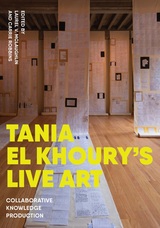 Tania El Khoury's Live Art: Collaborative Knowledge Production
Laurel V. McLaughlin
Amherst College Press, 2023 Tania El Khoury’s Live Art is the first book to examine the work of Tania El Khoury, a “live” artist deeply engaged in the politics and histories of the South West Asia and North Africa (SWANA) region. Since the 2011 Syrian uprisings, El Khoury has conceived and created works about lived experiences at and across international borders in collaboration with migrants, refugees, and displaced persons as well as other artists, performers, and revolutionaries. All of El Khoury’s works cross borders: between forms of artistic practice, between artists and audiences, and between art and activism. Facilitating critical dialogue about the politics of SWANA and the impact of globalization, her performances and installations also test the boundaries of aesthetic, political, and everyday norms. This interdisciplinary and multimedia reader features essays by artists, curators, and scholars who explore the dynamic possibilities and complexities of El Khoury’s art. From social workers to archeologists to archivists, contributing authors engage with the radical epistemological and political revolutions that El Khoury and her collaborators invite us all to join.
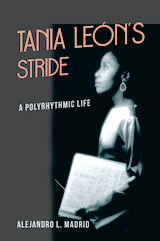 Tania León's Stride: A Polyrhythmic Life
Alejandro L. Madrid
University of Illinois Press, 2021 Acclaimed composer, sought-after conductor, esteemed educator, tireless advocate for the arts--Tania León’s achievements encompass but also stretch far beyond contemporary classical music. Alejandro L. Madrid draws on oral history, archival work, and ethnography to offer the first in-depth biography of the artist. Breaking from a chronological account, Madrid looks at León through the issues that have informed and defined moments in her life and her professional works. León’s words become a starting ground--but also a counterpoint--to the accounts of the people in her orbit. What emerges is more than an extraordinary portrait of an artist's journey. It is a story of how a human being reacts to the challenges thrown at her by history itself, be it the Cuban revolution or the struggle for civil and individual rights. Nuanced and multifaceted, Tania León's Stride looks at the life, legacy, and milieu that created and sustained one of the most important figures in American classical music.
A Tanizaki Feast: The International Symposium in Venice
Adriana Boscaro and Anthony Hood Chambers, Editors
University of Michigan Press, 1998 This volume presents 18 eighteen essays, written by scholars from six countries, on Tanizaki Jun’ichiro (1886–1965), one of the great writers of the 20th century. The essays were originally prepared for a landmark international symposium in Venice in 1995, at which 22 speakers addressed an audience of about two hundred students and scholars in the Aula Magna of the University of Venice. Topics include Tanizaki’s fiction, plays, and film scenarios; his aesthetics; his place in Japanese intellectual history; his depiction of the West; his use of humor; and film adaptations of his works. In 1964 Tanizaki was elected to honorary membership in the American Academy and Institute of Arts and Letters, the first Japanese to be so honored; and it is widely believed that he was being considered for the Nobel Prize in Literature.
The Tanner Lectures Vol 25
Grethe B Peterson
University of Utah Press, 2005 The Tanner Lectures on Human Values, founded July 1, 1978, at Clare Hall, Cambridge University, was established by the American scholar, industrialist, and philanthropist Obert Clark Tanner. Lectureships are awarded to outstanding scholars or leaders in broadly defined fields of human values, and transcend ethnic, national, religious, or ideological distinctions. Volume 25 features lectures given by Frans B.M. de Waal, Richard Dawkins, Christine M. Korsgaard, Seyla Benhabib, and Harry Frankfurt.
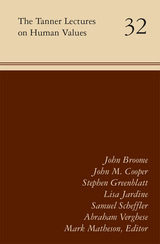 The Tanner Lectures on Human Values: Volume 32
Mark Matheson
University of Utah Press, 2013 The Tanner Lectures on Human Values, founded July 1, 1978, at Clare Hall, Cambridge University, was established by the American scholar, industrialist, and philanthropist Obert Clark Tanner. Lectureships are awarded to outstanding scholars or leaders in broadly defined fields of human values and transcend ethnic, national, religious, or ideological distinctions. Volume 32 features lectures given during the academic year 2011–2012 at the University of Michigan; Princeton University; Stanford University; the University of California, Berkeley; the University of Utah; and Yale University. This volume includes the following lectures:
John Broome, “The Public and Private Morality of Climate Change”
John Broome is the Whites Professor of Moral Philosophy at the University of Oxford and a fellow of Corpus Christi College in Oxford. He has written six books.
John M. Cooper, “Ancient Philosophies as Ways of Life”
John Cooper is the Henry Putnam University Professor of Philosophy at Princeton University. His books include Pursuits of Wisdom: Six Ways of Ancient Philosophy from Socrates to Plotinus and Panentheism: The Other God of the Philosophers.
Stephen Greenblatt, “Shakespeare and the End of Life History”
Stephen Greenblatt is the John Cogan University Professor of the Humanities at Harvard University. He is the author of several books, including the 2012 Pulitzer Prize–winning The Swerve: How the World Became Modern and Will in the World: How Shakespeare Became Shakespeare.
Lisa Jardine, “The Sorcerer’s Apprentice: C. P. Snow and J. Bronowski” and “Science and Government: C. P. Snow and the Corridors of Power”
Lisa Jardine is a professor of Renaissance studies at University College London, where she is the director of the Interdisciplinary Centre for Research in the Humanities and the Centre for Editing Lives and Letters. She has published more than fifty scholarly articles and seventeen books, including Going Dutch: How England Plundered Holland’s Glory.
Samuel Scheffler, “The Afterlife”
Samuel Scheffler is University Professor and a professor of philosophy and law at New York University. He has published four books in the areas of moral and political philosophy, including Equality and Tradition.
Abraham Verghese, “Two Souls Intertwined”
Abraham Verghese is a professor of medicine and senior associate chair for the Theory and Practice of Medicine at Stanford University. He has published widely across disciplines, including My Own Country: A Doctor’s Story and the novel Cutting for Stone. He is perhaps best known for his deep interest in bedside medicine and work in the medical humanities.
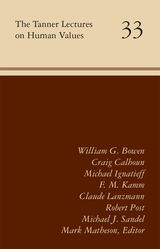 The Tanner Lectures on Human Values: Volume 33
Mark Matheson
University of Utah Press, 2014 The Tanner Lectures on Human Values, founded July 1, 1978, at Clare Hall, Cambridge University, was established by the American scholar, industrialist, and philanthropist Obert Clark Tanner. Lectureships are awarded to outstanding scholars or leaders in broadly defined fields of human values and transcend ethnic, national, religious, or ideological distinctions. Volume 33 features lectures given during the academic year 2012-2013 at Stanford University; the University of Michigan; the University of Oxford; the University of California, Berkeley; Harvard University; the University of Utah; and the U.S. Ambassador’s Palace, Paris, France.
William G. Bowen, “Costs and Productivity in Higher Education” and “Prospects for an Online Fix: Can We Harness Technology in the Service of Our Aspirations?”
Craig Calhoun, “The Problematic Public: Revisiting Dewey, Arendt, and Habermas”
Michael Ignatieff, “Representation and Responsibility: Ethics and Public Office”
F. M. Kamm, “Who Turned the Trolley?” and “How Was the Trolley Turned?”
Claude Lanzmann, “Resurrection”
Robert Post, “Representative Democracy: The Constitutional Theory of Campaign Finance Reform” and “Campaign Finance Reform and the First Amendment”
Michael J. Sandal, “The Moral Economy of Speculation: Gambling, Finance, and the Common Good”
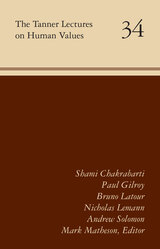 The Tanner Lectures on Human Values: Volume 34
Mark Matheson
University of Utah Press, 2016 The Tanner Lectures on Human Values, founded July 1, 1978, at Clare Hall, Cambridge University, was established by the American scholar, industrialist, and philanthropist Obert Clark Tanner. Lectureships are awarded to outstanding scholars or leaders in broadly defined fields of human values and transcend ethnic, national, religious, or ideological distinctions. Volume 34 features lectures given during the academic year 2013 to 2014 at the University of Oxford; Stanford University; the University of Utah; and Yale University. Shami Chakrabarti, Liberty Organization (formerly National Council for Civil Liberties)
“Human Rights as Human Values” Paul Gilroy, King’s College London
“The Black Atlantic and Re-enchantment of Humanism” Bruno Latour, Institut d’etudes politiques (Sciences Po) Paris “How Better to Register the Agency of Things” Nicholas Lemann, Columbia University School of Journalism “The Turn Against Institutions” and “What Transactions Can’t Do” Andrew Solomon, Author
“Love, Acceptance, Celebration: How Parents Make Their Children”
The Tanner Lectures on Human Values: Volume 39
Edited by Mark Matheson
University of Utah Press, 2024 The Tanner Lectures on Human Values, founded July 1, 1978, at Clare Hall, University of Cambridge, were established by the American scholar, industrialist, and philanthropist Obert Clark Tanner. Lectureships are awarded to outstanding scholars or leaders in broadly defined fields of human values and transcend ethnic, national, religious, or ideological distinctions. Volume 39 includes lectures initially scheduled during the academic year 2019 – 2020 at the University of Michigan, Cambridge, Princeton University, Stanford University, and Yale University. Owing to the global coronavirus pandemic, some were delivered at a later date.
The Tanner Lectures Vol 26
Peterson, Grethe B
University of Utah Press, 2006 The Tanner Lectures on Human Values, founded July 1, 1978, at Clare Hall, Cambridge University, was established by the American scholar, industrialist, and philanthropist Obert Clark Tanner. Lectureships are awarded to outstanding scholars or leaders in broadly defined fields of human values, and transcend ethnic, national, religious, or ideological distinctions. Volume 26 features lectures given by Stephen Breyer, Carl Bildt, Axel Honneth, Paul Farmer, and Avishai Margalit.
The Tanner Lectures Vol 27
Grethe B Peterson
University of Utah Press, 2007 The Tanner Lectures on Human Values, founded July 1, 1978, at Clare Hall, Cambridge University, was established by the American scholar, industrialist, and philanthropist Obert Clark Tanner. Lectureships are awarded to outstanding scholars or leaders in broadly defined fields of human values, and transcend ethnic, national, religious, or ideological distinctions. Volume 27 features lectures given by Ruth Reichl, James Q. Wilson, Marshall Sahlins, David Brion Davis, Allan Gibbard, and Margaret H. Marshall.
Tannery Bay: A Novel
Steven Dunn and Katie Jean Shinkle
University of Alabama Press, 2024 In a town trapped in endless July, love, resistance, and imagination break the loop. Enter a world where time stands still and summer never ends. In the enchanted town of Tannery Bay, it’s July 37, and then July 2 again, but the year is a mystery. Trapped in an eternal loop, the residents embark on an extraordinary journey of self-discovery, unity, and defiance against the forces that seek to divide them. Otis and Joy, intrepid siblings, work with their family and friends to oppose a formidable adversary: The Owners. These cunning and ruthless old men, driven by insatiable greed, hold the town hostage, exploiting its resources and dividing its people. In this powerful #OwnVoices narrative, Tannery Bay is a captivating tale of Black Joy and Queer Joy and the ways in which family is both biological and chosen, where love transcends boundaries, and where art is a vehicle for change.
Tantalisingly Close: An Archaeology of Communication Desires in Discourses of Mobile Wireless Media
Imar De Vries
Amsterdam University Press, 2012 While studies of mobile wireless communication devices usually focus on their social implications, De Vries proposes to venture into a more historical and comparative direction to shed light on our preoccupation with them in the first place. He constructs an archaeological view of the development of communication technologies over the past 200 years, providing a comprehensive account of how persistent hopes and beliefs have come to give mobile wireless media such a prominent position today. Our expectations and uses of them are surprisingly similar to those of older media; consequently, they reconfirm the idea that living in an ‘anyone, anything, anytime, anywhere’ world is both a blessing and a curse, and that the desire for sublime communication is a tragic yet highly powerful regulative principle in our media evolution.
Tanu Rabbanan - Our Rabbis Taught
Joseph B. Glaser
Central Conference of American Rabbis, 1990 Essays in commemoration of the Centennial of the Central Conference of American Rabbis. Includes four discourses which together present the agenda of the American Reform Movement. Historical overviews of Conference history complete this volumen.
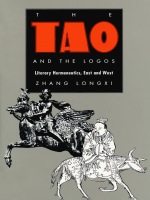 The Tao and the Logos: Literary Hermeneutics, East and West
Longxi Zhang
Duke University Press, 1992 Questions of the nature of understanding and interpretation—hermeneutics—are fundamental in human life, though historically Westerners have tended to consider these questions within a purely Western context. In this comparative study, Zhang Longxi investigates the metaphorical nature of poetic language, highlighting the central figures of reality and meaning in both Eastern and Western thought: the Tao and the Logos. The author develops a powerful cross-cultural and interdisciplinary hermeneutic analysis that relates individual works of literature not only to their respective cultures, but to a combined worldview where East meets West.
Zhang's book brings together philosophy and literature, theory and practical criticism, the Western and the non-Western in defining common ground on which East and West may come to a mutual understanding. He provides commentary on the rich traditions of poetry and poetics in ancient China; equally illuminating are Zhang's astute analyses of Western poets such as Rilke, Shakespeare, and Mallarmé and his critical engagement with the work of Foucault, Derrida, and de Man, among others.
Wide-ranging and learned, this definitive work in East-West comparative poetics and the hermeneutic tradition will be of interest to specialists in comparative literature, philosophy, literary theory, poetry and poetics, and Chinese literature and history.
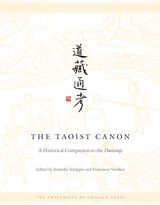 The Taoist Canon: A Historical Companion to the Daozang
Edited by Kristofer Schipper and Franciscus Verellen
University of Chicago Press, 2005 Taoism remains the only major religion whose canonical texts have not been systematically arranged and made available for study. This long-awaited work, a milestone in Chinese studies, catalogs and describes all existing texts within the Taoist canon. The result will not only make the entire range of existing Taoist texts accessible to scholars of religion, it will open up a crucial resource in the study of the history of China.
The vast literature of the Taoist canon, or Daozang, survives in a Ming Dynasty edition of some fifteen hundred different texts. Compiled under imperial auspices and completed in 1445—with a supplement added in 1607—many of the books in the Daozang concern the history, organization, and liturgy of China's indigenous religion. A large number of works deal with medicine, alchemy, and divination.
If scholars have long neglected this unique storehouse of China's religious traditions, it is largely because it was so difficult to find one's way within it. Not only was the rationale of its medieval classification system inoperable for the many new texts that later entered the Daozang, but the system itself was no longer understood by the Ming editors; hence the haphazard arrangement of the canon as it has come down to us.
This new work sets out the contents of the Daozang chronologically, allowing the reader to follow the long evolution of Taoist literature. Lavishly illustrated, the first volume ranges from antiquity through the Middle Ages, while the second spans the modern period. Within this frame, texts are grouped by theme and subject. Each one is the subject of a historical abstract that identifies the text's contents, date of origin, and author. Throughout the first two volumes, introductions outline the evolution of Taoism and its spiritual heritage. A third volume offering biographical sketches of frequently mentioned Taoists, multiple indexes, and an extensive bibliography provides critical tools for navigating this guide to one of the fundamental aspects of Chinese culture.
 The Taoist Canon, Volume 1 (Replacement Volume): A Historical Companion to the Daozang
Edited by Kristofer Schipper and Franciscus Verellen
University of Chicago Press, 2005 Taoism remains the only major religion whose canonical texts have not been systematically arranged and made available for study. This long-awaited work, a milestone in Chinese studies, catalogs and describes all existing texts within the Taoist canon. The result will not only make the entire range of existing Taoist texts accessible to scholars of religion, it will open up a crucial resource in the study of the history of China.
The vast literature of the Taoist canon, or Daozang, survives in a Ming Dynasty edition of some fifteen hundred different texts. Compiled under imperial auspices and completed in 1445—with a supplement added in 1607—many of the books in the Daozang concern the history, organization, and liturgy of China's indigenous religion. A large number of works deal with medicine, alchemy, and divination.
If scholars have long neglected this unique storehouse of China's religious traditions, it is largely because it was so difficult to find one's way within it. Not only was the rationale of its medieval classification system inoperable for the many new texts that later entered the Daozang, but the system itself was no longer understood by the Ming editors; hence the haphazard arrangement of the canon as it has come down to us.
This new work sets out the contents of the Daozang chronologically, allowing the reader to follow the long evolution of Taoist literature. Lavishly illustrated, the first volume ranges from antiquity through the Middle Ages, while the second spans the modern period. Within this frame, texts are grouped by theme and subject. Each one is the subject of a historical abstract that identifies the text's contents, date of origin, and author. Throughout the first two volumes, introductions outline the evolution of Taoism and its spiritual heritage. A third volume offering biographical sketches of frequently mentioned Taoists, multiple indexes, and an extensive bibliography provides critical tools for navigating this guide to one of the fundamental aspects of Chinese culture.
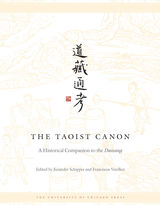 The Taoist Canon, Volume 2 (Replacement Volume): A Historical Companion to the Daozang
Edited by Kristofer Schipper and Franciscus Verellen
University of Chicago Press, 2005 Taoism remains the only major religion whose canonical texts have not been systematically arranged and made available for study. This long-awaited work, a milestone in Chinese studies, catalogs and describes all existing texts within the Taoist canon. The result will not only make the entire range of existing Taoist texts accessible to scholars of religion, it will open up a crucial resource in the study of the history of China.
The vast literature of the Taoist canon, or Daozang, survives in a Ming Dynasty edition of some fifteen hundred different texts. Compiled under imperial auspices and completed in 1445—with a supplement added in 1607—many of the books in the Daozang concern the history, organization, and liturgy of China's indigenous religion. A large number of works deal with medicine, alchemy, and divination.
If scholars have long neglected this unique storehouse of China's religious traditions, it is largely because it was so difficult to find one's way within it. Not only was the rationale of its medieval classification system inoperable for the many new texts that later entered the Daozang, but the system itself was no longer understood by the Ming editors; hence the haphazard arrangement of the canon as it has come down to us.
This new work sets out the contents of the Daozang chronologically, allowing the reader to follow the long evolution of Taoist literature. Lavishly illustrated, the first volume ranges from antiquity through the Middle Ages, while the second spans the modern period. Within this frame, texts are grouped by theme and subject. Each one is the subject of a historical abstract that identifies the text's contents, date of origin, and author. Throughout the first two volumes, introductions outline the evolution of Taoism and its spiritual heritage. A third volume offering biographical sketches of frequently mentioned Taoists, multiple indexes, and an extensive bibliography provides critical tools for navigating this guide to one of the fundamental aspects of Chinese culture.
 The Taoist Canon, Volume 3 (Replacement Volume): A Historical Companion to the Daozang
Edited by Kristofer Schipper and Franciscus Verellen
University of Chicago Press, 2005 Taoism remains the only major religion whose canonical texts have not been systematically arranged and made available for study. This long-awaited work, a milestone in Chinese studies, catalogs and describes all existing texts within the Taoist canon. The result will not only make the entire range of existing Taoist texts accessible to scholars of religion, it will open up a crucial resource in the study of the history of China.
The vast literature of the Taoist canon, or Daozang, survives in a Ming Dynasty edition of some fifteen hundred different texts. Compiled under imperial auspices and completed in 1445—with a supplement added in 1607—many of the books in the Daozang concern the history, organization, and liturgy of China's indigenous religion. A large number of works deal with medicine, alchemy, and divination.
If scholars have long neglected this unique storehouse of China's religious traditions, it is largely because it was so difficult to find one's way within it. Not only was the rationale of its medieval classification system inoperable for the many new texts that later entered the Daozang, but the system itself was no longer understood by the Ming editors; hence the haphazard arrangement of the canon as it has come down to us.
This new work sets out the contents of the Daozang chronologically, allowing the reader to follow the long evolution of Taoist literature. Lavishly illustrated, the first volume ranges from antiquity through the Middle Ages, while the second spans the modern period. Within this frame, texts are grouped by theme and subject. Each one is the subject of a historical abstract that identifies the text's contents, date of origin, and author. Throughout the first two volumes, introductions outline the evolution of Taoism and its spiritual heritage. A third volume offering biographical sketches of frequently mentioned Taoists, multiple indexes, and an extensive bibliography provides critical tools for navigating this guide to one of the fundamental aspects of Chinese culture.
Taoist Meditation and Longevity Techniques
Edited by Livia Kohn, in cooperation with Yoshinobu Sakade
University of Michigan Press, 1989 Taoist Meditation and Longevity Techniques covers the major areas of Taoist meditation and longevity techniques in roughly chronological order. The book addresses itself to the China area specialist or the scholar of religion and the history of science who wishes to know more about (and perhaps even must teach) aspects of Chinese culture that involve Taoism and traditional medicine. [viii, ix] Other topics include Japanese interpretations of longevity techniques, drugs and immortality, visualization and ecstatic experience, and qigong and gymnastics.
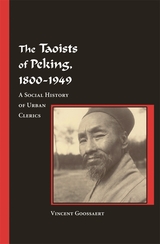 The Taoists of Peking, 1800-1949: A Social History of Urban Clerics
Vincent Goossaert
Harvard University Press, 2007 By looking at the activities of Taoist clerics in Peking, this book explores the workings of religion as a profession in one Chinese city during a period of dramatic modernization. The author focuses on ordinary religious professionals, most of whom remained obscure temple employees. Although almost forgotten, they were all major actors in urban religious and cultural life.
The clerics at the heart of this study spent their time training disciples, practicing and teaching self-cultivation, performing rituals, and managing temples. Vincent Goossaert shows that these Taoists were neither the socially despised illiterates dismissed in so many studies, nor otherworldly ascetics, but active participants in the religious economy of the city. In exploring exactly what their crucial role was, he addresses the day-to-day life of modern Chinese religion from the perspective of ordinary religious specialists. This approach highlights the social processes, institutions, and networks that transmit religious knowledge and mediate between prestigious religious traditions and the people in the street. In modern Chinese religion, the Taoists are such key actors. Without them, "Taoist ritual" and "Taoist self-cultivation" are just empty words.
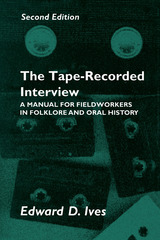 Tape Recorded Interview 2nd Ed: Manual Field Workers Folklore Oral History
Edward D. Ives
University of Tennessee Press, 1995 Since 1980, The Tape-Recorded Interview has been an essential resource for folklorists and oral historians—indeed, for anyone who uses a tape recorder in field research. Now, Sandy Ives has updated this manual to reflect the current preferences in tape-recording technology and equipment.
When this book was first published, the reel-to-reel recorder was the favored format for fieldwork. Because the cassette recorder has almost completely replaced it, Ives has revised the first chapter, “How a Tape Recorder Works,” accordingly and has included a useful discussion of the differences between analog and digital recording. He has also added a brief section on video, updated the bibliography, and reworked his original comments on tape cataloging and transcription.
As in the first edition, Ives’s emphasis is on documenting the lives of common men and women. He offers a careful, step-by-step tour through the collection process—finding informants, making advance preparations, conducting the actual interview, obtaining a release—and then describes the procedures for processing the taped interview and archiving such materials for future use. He also gives special treatment to such topics as recording music, handling group interviews, and using photographs or other visual material during interviews.
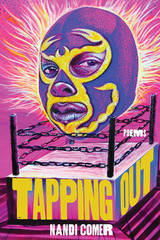 Tapping Out: Poems
Nandi Comer
Northwestern University Press, 2020 The relentless motions and blinding colors of lucha libre, the high-flying wrestling sport, are the arresting backdrop to Nandi Comer’s collection Tapping Out. Mexican freestyle wrestling becomes the poet’s lyrical motif, uncovering what is behind the intricate masks we wear in society and our search for place within our personal histories. Comer’s poetic narratives include explorations of violence, trauma, and identity. The exquisite complications of the black experience in settled and unsettled spaces propel her linear explorations, which challenge the idea of metaphor and cadence.
The harsh realities of being migrant and immigrant, being birthright and oppressed, are as hard-pressed as the plancha move to the body. Each poem in Tapping Out is a “freestyle movement” of language and complexity put on full display, under the bright lights and roars of survival. Comer’s splendid and barbed, Detroit style of language melts the masks with searing words.
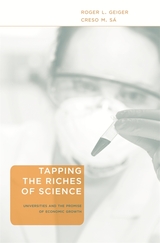 Tapping the Riches of Science: Universities and the Promise of Economic Growth
Roger L. Geiger and Creso M. Sá
Harvard University Press, 2009 Can university-based scientific research contribute to the economic development of a region? Can it generate wealth for the university? American universities are under increasing pressure to maximize their economic contributions. Tapping the Riches of Science offers a rigorous and far-sighted explanation of this controversial and little-understood movement.
Just how do universities contribute to innovation in industry? How have state legislatures promoted local university commitments to economic relevance? And how has the pressure to be economically productive affected the core academic missions of teaching and research? Drawing from a range of social science analyses, campus interviews, and examples of university-industry partnerships, Roger Geiger and Creso Sá reveal the ways that economic development has been incorporated into university commitments.
Noting enduring cultural differences between the academic and business worlds, Geiger and Sá deflate both suspicious and overconfident views. They show how elusive success can be for embryonic discoveries with as-yet-unclear applications. Warning against promising—and expecting—too much, Tapping the Riches of Science nonetheless makes a strong case for the long-term promise of practical uses for academic research.
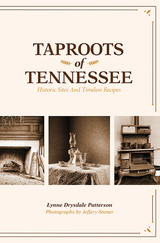 Taproots of Tennessee: Historic Sites and Timeless Recipes
Lynne Drysdale Patterson
University of Tennessee Press, 2019 What was served at President James K. Polk’s White House dinners? What foods graced the table of John Sevier, Tennessee’s First Governor? In Taproots of Tennessee, Lynne Drysdale Patterson answers these questions and more, exploring nearly two centuries of Tennessee foodways. Readers will discover that Tennessee taste encompasses the exquisite, such as President Polk’s French-inspired Croquettes Poulet with Bechamel Sauce and General James Winchester’s spoils-of-the-hunt Roast Goode with Wild Rice and Wild Fox Grape Stuffing, to simpler fair, including Dr. Humphrey Howell Bate’s fried pies and Alex Haley’s boyhood menu of sweet tea and Southern staples.
Patterson takes readers on a historical and culinary tour of the Tennessee Historical Commission’s seventeen state historic sites with a collection of period foods from each site and menus with updated recipes for the twenty-first century food enthusiast. Patterson’s site histories provide readers with a journey through the accounts of Tennessee’s early settlers, their homesteads, cookery, schoolhouses, stage coach stops, and religious life. Her site recipes range from historic offerings, such as peaches from General Daniel Smith’s Rock Castle State Historic Site orchard fashioned into a delectable peach pound cake-potentially shared with neighbors Andrew and Rachel Donelson Jackson-to more modern representations of historic foodways, such as Scottish-influenced Scotch Barley Soup and Scotch Egg likely eaten by Sam Houston.
From homes of Tennessee’s first families to stagecoach stops in the 1830s, from Civil War command posts to rural schoolhouses, foodies and academics alike will delight in this compendium of Southern recipes, served with a generous helping of history.
 Tarab: Music, Ecstasy, Emotion, and Performance
Edited by Michael Frishkopf, Scott Marcus, and Dwight F. Reynolds
University of Texas Press, 2025 In Arab culture, at the ineffable point where music meets emotion, lies ṭarab. Often glossed as the ecstasy experienced and expressed when performing or listening to singing, instrumental works, and recitations of poetry, ṭarab is both a practice and an orienting concept central to musical aesthetics and spirituality characteristic of Middle Eastern cultures. Gathering fifteen essays by scholars of music, affect, literature, religion, and education, Ṭarab extends the study of ṭarab historically, geographically, and sociologically. Historical essays explore ṭarab’s role in the medieval Middle East and the Ottoman Empire. Turning to the modern era, authors examine ṭarab and related concepts in Egypt, Albania, and Iraq, and among Turkish Roma and Lebanese Maronite Christians. The contributors also address contemporary practitioners and the intersections of ṭarab and maqām, belly dancing, music streaming, and university music ensembles. Situating this unique cultural concept in a global context, these studies enrich the story of ṭarab and provide new insight into music’s powerful emotional appeal.
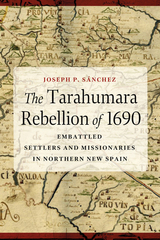 The Tarahumara Rebellion of 1690: Embattled Settlers and Missionaries in Northern New Spain
Joseph P. Sánchez
University of Arizona Press, 2025 The Tarahumara Rebellion of 1690 examines a seventeenth-century Indigenous uprising in northern Mexico aimed at driving out Spanish miners, missionaries, and settlers from Tarahumara (Rarámuri) and Tepehuanes homelands.
Previous histories have interpreted this revolt, and other borderlands uprisings, as localized and spontaneous events aimed at rectifying specific grievances. Historian Joseph P. Sánchez argues that the revolts of the Tepehuanes and the Tarahumaras in northern New Spain, or Nueva Vizcaya, were well-planned, inspired by outside events, and drew in multiple communities and ethnicities. Drawing on a wealth of primary sources, including Jesuit accounts and archival documents, Sánchez offers a comprehensive narrative that challenges conventional interpretations of colonial Mexican uprisings.
Far from localized, the Indigenous rebellions in the northern Mexican borderlands during the colonial period were part of the overall Indigenous struggle for defense of homeland throughout the Americas. The Tarahumara Rebellion of 1690 brings together a rich history of localized events and broader historical trends and offers a compelling narrative that enriches our understanding of the colonial experience in northern New Spain.
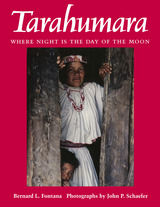 Tarahumara: Where Night is the Day of the Moon
Bernard L. Fontana; Photographs by John P. Schaefer
University of Arizona Press, 1997 Inhabiting the Sierra Madre Occidental of southwestern Chihuahua in Mexico, the Tarahumara (or Rarámuri) are known in their language as the "foot runners" due to the way in which they must navigate their rugged terrain. This book offers an accessible ethnography of their history, customs, and current life, accompanied by photographs that offer striking images of these gentle people.
The subtitle of the book derives from the Tarahumara's belief that the soul works at night while the body sleeps and that during this "day of the moon" both the spirits of the dead and the souls of the living move about in their mysterious ways.
As the authors observe, the fact that "so many men, women, and children persist in distinctive, centuries-old cultural traditions in spite of their nearness to all the complexities and attractions of modern industrial society is an importatn part of the story." Their book tells that story and brings readers closer to understanding the Tarahumara world and way of life.
Tarantas: Impressions of a Journey
Vladimir Sollogub (translated by Michael Katz)
University of Pittsburgh Press, 2020 In this 19th century Russian social novella, two contrasting characters—one a western-educated intellectual, the other a hidebound country squire—find themselves thrown together on a long cross country journey in a primitive but sturdy carriage—a tarantas. Their shared observations as the troubled panorama of the Russian countryside rolls past is the basis for this commentary on the country’s prospects for social change. Renowned translator Michal R. Katz offers the first new translation of this overlooked novella since the late 1800s, shortly after original publication.
 Taras Shevchenko: A Portrait in Four Sittings
George G. Grabowicz
Harvard University Press Taras Shevchenko (1814–1861), whose bicentennial coincided with the momentous events occurring in Ukraine in 2014, is almost universally acclaimed as the father of the modern Ukrainian nation and the icon of its cultural and political resurgence. Despite the volume and range of the scholarly attention devoted to him, however, much about his biography and creative output remains murky, largely as a result of the cult and myth that still envelop his legacy. This revisionist study reexamines the four basic frames that structure this legacy: Shevchenko’s biography, his career as a painter, the nature of his poetry, and its counterpoint in his considerable prose output. The questions addressed are fundamental: How did a former serf from the provinces become a presence at the imperial court in St. Petersburg? How could he reconcile a promising career in art and the world of patronage with his revolutionary poetry? How is a national poet made, and how does he function in the face of an official prohibition against writing and painting? And what does his Russian prose tell us about the Ukrainian voice of the national poet? The portrait that emerges shows a much more complex writer and artist than the icon intimates.
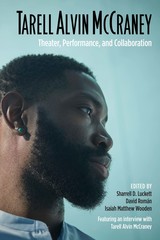 Tarell Alvin McCraney: Theater, Performance, and Collaboration
Edited by Sharrell D. Luckett, David Román, and Isaiah Matthew Wooden
Northwestern University Press, 2020 This is the first book to dedicate scholarly attention to the work of Tarell Alvin McCraney, one of the most significant writers and theater-makers of the twenty-first century. Featuring essays, interviews, and commentaries by scholars and artists who span generations, geographies, and areas of interest, the volume examines McCraney’s theatrical imagination, his singular writerly voice, his incisive cultural critiques, his stylistic and formal creativity, and his distinct personal and professional trajectories.
Contributors consider McCraney’s innovations as a playwright, adapter, director, performer, teacher, and collaborator, bringing fresh and diverse perspectives to their observations and analyses. In so doing, they expand and enrich the conversations on his much-celebrated and deeply resonant body of work, which includes the plays Choir Boy, Head of Passes, Ms. Blakk for President, The Breach, Wig Out!, and the critically acclaimed trilogy The Brother/Sister Plays: In the Red and Brown Water, The Brothers Size, and Marcus; Or the Secret of Sweet, as well as the Oscar Award–winning film Moonlight, which was based on his play In Moonlight Black Boys Look Blue.
 Target Detection by Marine Radar
John N. Briggs
The Institution of Engineering and Technology, 2004 Radar is a legal necessity for the safe navigation of merchant ships, and within vessel traffic services is indispensable to the operation of major ports and harbours. Target Detection by Marine Radar concentrates solely on civil marine operations and explains how marine surveillance radars detect their targets. The book is fully illustrated and contains worked examples to help the reader understand the principles underlying radar operation and to quantify the importance of factors such as the technical features of specific equipment, the weather, target reflection properties, and the ability of the operator. The precision with which targets are positioned on the radar screen and with which their progress is tracked or predicted depends on how definitely they have been detected, therefore a whole chapter has been devoted to the issue of accuracy. The various international regulations governing marine radar are examined, a brief historical background is given to modern day practice and the book doses with a discussion of the ways in which marine radar may develop to meet future challenges.
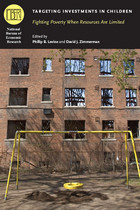 Targeting Investments in Children: Fighting Poverty When Resources Are Limited
Edited by Phillip B. Levine and David J. Zimmerman
University of Chicago Press, 2010 A substantial number of American children experience poverty: about 17 percent of those under the age of eighteen meet the government’s definition, and the proportion is even greater within minority groups. Childhood poverty can have lifelong effects, resulting in poor educational, labor market, and physical and mental health outcomes for adults. These problems have long been recognized, and there are numerous programs designed to alleviate or even eliminate poverty; as these programs compete for scarce resources, it is important to develop a clear view of their impact as tools for poverty alleviation.
Targeting Investments in Children tackles the problem of evaluating these programs by examining them using a common metric: their impact on earnings in adulthood. The volume’s contributors explore a variety of issues, such as the effect of interventions targeted at children of different ages, and study a range of programs, including child care, after-school care, and drug prevention. The results will be invaluable to educational leaders and researchers as well as policy makers.
 Tariff Wars and the Politics of Jacksonian America
William K. Bolt
Vanderbilt University Press, 2016 Before the Civil War, the American people did not have to worry about a federal tax collector coming to their door. The reason why was the tariff, taxing foreign goods and imports on arrival in the United States. Tariff Wars and the Politics of Jacksonian America attempts to show why the tariff was an important part of the national narrative in the antebellum period. The debates in Congress over the tariff were acrimonious, with pitched arguments between politicians, interest groups, newspapers, and a broader electorate.
The spreading of democracy caused by the tariff evoked bitter sectional controversy among Americans. Northerners claimed they needed a tariff to protect their industries and also their wages. Southerners alleged the tariff forced them to buy goods at increased prices. Having lost the argument against the tariff on its merits, in the 1820s, southerners began to argue the Constitution did not allow Congress to enact a protective tariff. In this fight, we see increased tensions between northerners and southerners in the decades before the Civil War began.
As Tariff Wars reveals, this struggle spawned a controversy that placed the nation on a path that would lead to the early morning hours of Charleston Harbor in April of 1861.
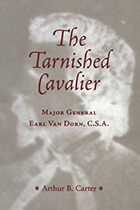 Tarnished Cavalier: Major General Earl Van Dorn
Arthur B. Carter
University of Tennessee Press, 2013 “Arthur Carter brings new perspective to Confederate knight-errant Earl Van Dorn, who might have been famous rather than infamous had he lived. . . . Carter suggests how Van Dorn the cavalryman could have joined mounted leaders Forrest, Morgan, and Wheeler as raiders-superb and mainstay of Confederate success in the West. Except for one costly peccadillo, Van Dorn would have been one of the South’s rising rather than falling stars.”—Benjamin Franklin Cooling, Author of Fort Donelson’s Legacy
Dashing, bold, and fearless in command, Major General Earl Van Dorn was a soldier whose star shone brightly during the early days of the Confederacy. A veteran of the Mexican War and Indian campaigns, he is remembered for suffering devastating defeats while leading armies at Pea Ridge and Corinth and then redeeming himself as a cavalry commander at Holly Springs and Thompson Station. Yet he was perhaps best known for his reputation as a womanizer killed by an irate husband at the height of his career.
Arthur B. Carter’s biography of Van Dorn, the first in three decades, draws on previously unpublished sources regarding the general’s affair with Martha Goodbread—which resulted in three children—and his liaison with Jessica Peters, which resulted in his death. This new material, unknown to previous biographers, includes the revelation that the true circumstances of Van Dorn's death were kept secret by friends and comrades in order to protect his family. Carter reveals that the general was probably mortally wounded on the Peters plantation but was carried back to his Spring Hill headquarters. He reconstructs the details of Van Dorn's murder in a brisk narrative that draws on accounts of Van Dorn's confidantes, capturing both the danger and passion of those events.
The Tarnished Cavalier is more than a story of scandal. Carter sheds new light on Confederate conduct of the war in the western theater during 1861 and 1862, revisits the pivotal battles of Pea Ridge and Corinth—both of which are important to understanding the loss of the upper South—and introduces new perspectives on the defense of Vicksburg and the Middle Tennessee operations of early 1863.
Carter’s narrative juxtaposes Van Dorn's flamboyance with his failings as a commander: although he was a soldier with heroic aspirations, he was also impulsive, reckless, and unable to delegate authority. Perhaps more telling, it shows how Van Dorn’s character flaws extended to his personal life, cutting short a promising career.
The Author: Arthur B. Carter, a retired U.S. Army officer and educator, lives in Mobile, Alabama.
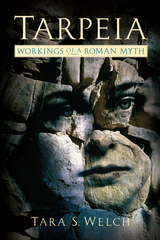 Tarpeia: Workings of a Roman Myth
Tara S. Welch
Ohio State University Press, 2015 According to legends of Rome’s foundation, Tarpeia was a maiden who betrayed Romulus’ city to the invading Sabines. She was then crushed to death by the Sabines’ shields and her body hurled from the Tarpeian Rock, which became the place from which subsequent traitors of the city were thrown. In this volume, Tara S. Welch explores the uses and contours of Tarpeia’s myth through several centuries of Roman history and across several types of ancient sources, including Latin and Greek texts in various genres.
Welch demonstrates how ancient thinkers used Tarpeia’s myth to highlight matters of ethics, gender, ethnicity, political authority, language, conquest, and tradition. This cluster of themes reveals that Tarpeia’s myth is not primarily about what it means to be human, but rather what it means to be Roman. Thus Tarpeia’s story spans centuries, distances, genres, and modes of communication—Rome itself did. No Greek city-state could admit such continuity, and Greece was never so constant. In this way, though Tarpeia has a dozen Greek cousins whose stories are similar to hers, hers is a powerfully Roman myth, even for the Greeks who told her tale. She is token, totem, and symbol of Rome.
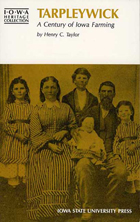 Tarpleywick: A Century of Iowa Farming
Henry C. Taylor
University of Iowa Press (Tarpleywick description) “When Tarpley Early Taylor came of age on August 2, 1858, his father gave him a horse, a saddle, and a bridle and wished him well…His first independent move was to go on horseback to Louisiana, Missouri, to visit his maternal grandparents, the Zumwalts. He stayed with them for some time, probably through the winter…We do not know what he did from the spring of 1859 to the spring of 1860 except that he had been earning money and saving it. We do know that he had returned to Van Buren County by Juy 24, 1860, because on that date he paid $800 for sixty acres of land a mile south of his father’s house…This was the beginning of Tarpleywick.” Born in Iowa in 1873, he was 96 years old when he died in May 1969. Taylor received his undergraduate training from Drake University and Iowa State University, his M.S. degree from Iowa State, and his Ph.D. degree from the University of Wisconsin. He was the first professor of agricultural economics in a land grant institution, the author of the first American textbook dealing with the principles of agricultural economics, the organizer and first Chief of the Bureau of Agricultural Economics in the USDA, and the first Managing Director of the Farm Foundation.
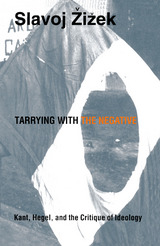 Tarrying with the Negative: Kant, Hegel, and the Critique of Ideology
Slavoj Zizek
Duke University Press, 1993 In the space of barely more than five years, with the publication of four pathbreaking books, Slavoj Žižek has earned the reputation of being one of the most arresting, insightful, and scandalous thinkers in recent memory. Perhaps more than any other single author, his writings have constituted the most compelling evidence available for recognizing Jacques Lacan as the preemient philosopher of our time.
In Tarrying with the Negative, Žižek challenges the contemporary critique of ideology, and in doing so opens the way for a new understanding of social conflict, particularly the recent outbursts of nationalism and ethnic struggle. Are we, Žižek asks, confined to a postmodern universe in which truth is reduced to the contingent effect of various discursive practices and where our subjectivity is dispersed through a multitude of ideological positions? No is his answer, and the way out is a return to philosophy. This revisit to German Idealism allows Žižek to recast the critique of ideology as a tool for disclosing the dynamic of our society, a crucial aspect of which is the debate over nationalism, particularly as it has developed in the Balkans—Žižek's home. He brings the debate over nationalism into the sphere of contemporary cultural politics, breaking the impasse centered on nationalisms simultaneously fascistic and anticolonial aspirations. Provocatively, Žižek argues that what drives nationalistic and ethnic antagonism is a collectively driven refusal of our own enjoyment.
Using examples from popular culture and high theory to illuminate each other—opera, film noir, capitalist universalism, religious and ethnic fundamentalism—this work testifies to the fact that, far more radically than the postmodern sophists, Kant and Hegel are our contemporaries.
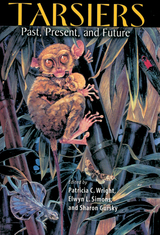 Tarsiers: Past, Present, and Future
Wright, Patricia C.
Rutgers University Press, 2003 Tarsiiformes, or tarsiers for short, are a group of living species of special interest to primatologists because their combination of derived and ancient characters make them pivotal to understanding the roots of primate evolution. These small-bodied, nocturnal, solitary creatures resemble lower primates in their behavior but genetically, DNA evidence aligns them more closely with higher primates, such as monkeys, apes, and humans. These astounding creatures exhibit an ability found in no other living mammal¾they can turn their heads 180 degrees in either direction to see both prey and predators. The world’s only exclusive carnivorous primate, they eat live food (primarily insects, but the occasional vertebrate, such as lizards, snakes, or frogs will also do). This unique combination of behavior and anatomy makes the tarsier an especially interesting and controversial animal for study among primate behaviorists, evolutionists, and taxonomists, who view the tarsiers as “living fossils” that link past and present, lower and higher, primates in the long chain of evolutionary history.
This new volume presents alternative and contrasting perspectives on the most debated questions that have arisen in tarsier studies. Top researchers bring together perspectives from anatomical, behavioral, genetic, and conservation studies in this new and exciting addition to the understanding of primate evolution.
This book is a volume in the Rutgers Series on Human Evolution, edited by Robert Trivers, Lee Cronk, Helen Fischer, and Lionel Tiger.
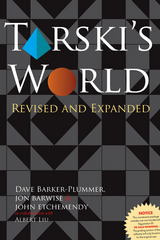 Tarski's World: Revised and Expanded
David Barker-Plummer, Jon Barwise, and John Etchemendy
CSLI, 2004 Tarski’s World is an innovative and exciting method of introducing students to the language of first-order logic. Using the courseware package, students quickly master the meanings of connectives and qualifiers and soon become fluent in the symbolic language at the core of modern logic. The program allows students to build three-dimensional worlds and then describe them in first-order logic. The program, compatible with Macintosh and Windows formats, also contains a unique and effective corrective tool in the form of a game, which methodically leads students back through their errors if they wrongly evaluate the sentences in the constructed worlds.
A brand new feature in this revised and expanded edition is student access to Grade Grinder, an innovative Internet-based grading service that provides accurate and timely feedback to students whenever they need it. Students can submit solutions for the program’s more than 100 exercises to the Grade Grinder for assessment, and the results are returned quickly to the students and optionally to the teacher as well. A web-based interface also allows instructors to manage assignments and grades for their classes.
Intended as a supplement to a standard logic text, Tarski’s World is an essential tool for helping students learn the language of logic.
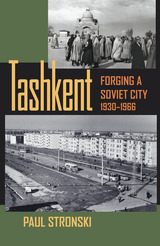 Tashkent: Forging a Soviet City, 1930–1966
Paul Stronski
University of Pittsburgh Press, 2010
Paul Stronski tells the fascinating story of Tashkent, an ethnically diverse, primarily Muslim city that became the prototype for the Soviet-era reimagining of urban centers in Central Asia. Based on extensive research in Russian and Uzbek archives, Stronski shows us how Soviet officials, planners, and architects strived to integrate local ethnic traditions and socialist ideology into a newly constructed urban space and propaganda showcase.
The Soviets planned to transform Tashkent from a “feudal city” of the tsarist era into a “flourishing garden,” replete with fountains, a lakeside resort, modern roadways, schools, hospitals, apartment buildings, and of course, factories. The city was intended to be a shining example to the world of the successful assimilation of a distinctly non-Russian city and its citizens through the catalyst of socialism. As Stronski reveals, the physical building of this Soviet city was not an end in itself, but rather a means to change the people and their society.
Stronski analyzes how the local population of Tashkent reacted to, resisted, and eventually acquiesced to the city’s socialist transformation. He records their experiences of the Great Terror, World War II, Stalin’s death, and the developments of the Krushchev and Brezhnev eras up until the earthquake of 1966, which leveled large parts of the city. Stronski finds that the Soviets established a legitimacy that transformed Tashkent and its people into one of the more stalwart supporters of the regime through years of political and cultural changes and finally during the upheavals of glasnost.
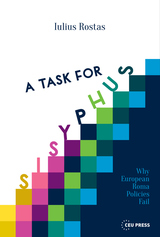 A Task for Sisyphus: Why Europe’s Roma Policies Fail
Iulius Rostas
Central European University Press, 2020 Despite an increasing number of EU and government initiatives in their favor, the situation of Roma in Europe has only worsened. This book explores the many miscalculations, misconceptions, and blunders that have led to this failure. Looking at Hungary, the Czech Republic, and Romania, Rostas shows how policy makers in each country have mishandled already confused EU policy, from failing to define “Roma” to not having a way to evaluate their own progress. Rostas further argues that the alleged successes of these policies were actually the product of poor information and sometimes outright deception. Examining perennial topics among Roma like school segregation and political representation, the author shows how often the so-called success of Roma policies can be fallacious and simply pave the way for further problems. Rostas maintains that when the EU’s Framework for Roma program comes to an end in 2020, there must be a fundamental shift in policy for there to be any real improvement for Roma. Policy makers will have to address Roma issues not only in terms of poverty and social exclusion but also in terms of the particular nature of Romani ethnic identity. This shift requires reconceiving Roma as a “politically insular minority” and rearranging the power dynamics of local government to ensure that when the new era of Roma policy begins Roma themselves will have a voice in its formulation.
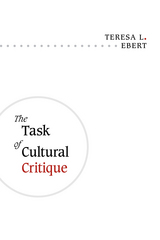 The Task of Cultural Critique
Teresa L. Ebert
University of Illinois Press, 2008 In this study, Teresa L. Ebert makes a spirited, pioneering case for a new cultural critique committed to the struggles for human freedom and global equality. Demonstrating the implosion of the linguistic turn that isolates culture from historical processes, The Task of Cultural Critique maps the contours of an emerging materialist critique that contributes toward a critical social and cultural consciousness. Through groundbreaking analyses of cultural texts, Ebert questions the contemporary Derridian dogma that asserts "the future belongs to ghosts." Events-to-come are not spectral, she contends, but the material outcome of global class struggles. Not "hauntology" but history produces cultural practices and their conflictive representations--from sexuality, war, and consumption to democracy, torture, globalization, and absolute otherness. With close readings of texts from Proust and Balzac to "Chick Lit," from Lukács, de Man, Deleuze, and Marx to Derrida, Žižek, Butler, Kollontai, and Agamben, the book opens up new directions for cultural critique today.
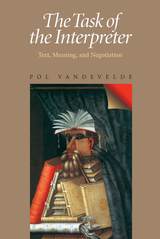 The Task of the Interpreter: Text, Meaning, and Negotiation
Pol Vandevelde
University of Pittsburgh Press, 2005 The Task of the Interpreter offers a new approach to what it means to interpret a text, and reconciles the possibility of multiple interpretations with the need to consider the author’s intention. Vandevelde argues that interpretation is both an act and an event: It is an act in that interpreters, through the statements they make, implicitly commit themselves to justifying their positions, if prompted. It is an event in that interpreters are situated in a cultural and historical framework and come to a text with questions, concerns, and methods of which they are not fully conscious. These two aspects make interpretation a negotiation of meaning. The Task of the Interpreter provides an interdisciplinary investigation of textual interpretation including biblical hermeneutics (Gregory the Great’s Homilies on Ezekiel), translation (Homer’s The Odyssey), and literary fictions (Grass’s Dog Years and Sabato’s On Heroes and Tombs). Vandevelde’s philosophical discussion will appeal to theorists of both continental and analytical/pragmatic traditions.
 Task-Based Instruction in Foreign Language Education: Practices and Programs
Betty Lou Leaver and Jane R. Willis, Editors
Georgetown University Press, 2004 Task-based language instruction has proven to be highly effective, but surprisingly underutilized. Theory can only go so far and hands-on experience can greatly speed and enhance the learning of a second language. Nineteen talented instructors who have successfully implemented task-based programs explain the principles behind the programs, discuss how problems were resolved, and share details on class activities and program design. Each chapter takes the reader through the different stages in designing and setting up such programs, adjusting them, and appraising and testing them in normal classroom conditions. This book covers TBI syllabus and program design and is based on actual classroom experience. Any one of the courses or programs discussed can serve as models for others. Many of the contributors are highly respected practitioners who are presenting their programs for the first time, while others are regular participants in today's ongoing dialogue about teaching methods. Full of concrete, adaptable models of task-based language teaching drawn from a number of countries and eleven different languages—including Arabic, Chinese, Czech, English, French, German, Korean, Spanish, and Ukrainian—Task-Based Instruction in Foreign Language Education presents proven, real-world, practical courses and programs; and includes web-based activities. It demonstrates useful and practical ways to engage students far beyond what can be learned from reading textbook dialogue. TBI involves the student directly with the language being taught via cognitively engaging activities that reflect authentic and purposeful use of language, resulting in language-learning experiences that are pleasurable and effective. For all instructors seeking to help their learners enhance their understanding and grasp of the foreign language they are learning, Task-Based Instruction in Foreign Language Education is a rich and rewarding hands-on guide to effective and transformative learning.
Task-Based Listening: What Every ESL Teacher Needs to Know
Steven Brown
University of Michigan Press, 2019 Are you looking for activities to use in your listening classes beyond asking students to answer comprehension questions? In Task-Based Listening, author Steven Brown defines task-based listening (TBL) and describes how to build a task-based listening program, how to create a task-based listening lesson, ways to activate vocabulary acquisition and improve grammatical knowledge, and the links between listening and pronunciation. In addition, he covers the ways that metacognitive strategies can assist students when listening, the advantages of extensive listening, and the benefits of interactive listening. Readers will find specific tips and suggestions for using these concepts in the classroom.
Tasker Street
Mark Halliday
University of Massachusetts Press, 1992 Winner of the 1991 Juniper Prize, the annual poetry award sponsored by the University of Massachusetts Press.
Taste
Giorgio Agamben
Seagull Books, 2017 Italian philosopher Giorgio Agamben takes a close look at why the sense of taste has not historically been appreciated as a means to know and experience pleasure or why it has always been considered inferior to actual theoretical knowledge.
Taste, Agamben argues, is a category that has much to reveal to the contemporary world. Taking a step into the history of philosophy and reaching to the very origins of aesthetics, Agamben critically recovers the roots of one of Western culture’s cardinal concepts. Agamben is the rare writer whose ideas and works have a broad appeal across many fields, and with Taste he turns his critical eye to the realm of Western art and aesthetic practice. This volume will not only engage the author’s devoted fans in philosophy, sociology, and literary criticism but also his growing audience among art theorists and historians.
 TASTE
Andrea Pavoni, Danilo Mandic, Caterina Nirta and Andreas Philippopoulos-Mihalopoulos
University of Westminster Press, 2018 Taste usually occupies the bottom of the sensorial hierarchy, as the quintessentially hedonistic sense, too close to the animal, the elemental and the corporeal, and for this reason disciplined and moralised. At the same time, taste is indissolubly tied to knowledge. To taste is to discriminate, emit judgement, enter an unstable domain of synaesthetic normativity where the certainty of metaphysical categories begins to crumble. This second title in the ‘Law and the Senses’ series explores law using taste as a conceptual and ontological category able to unsettle legal certainties, and a promising tool whereby to investigate the materiality of law’s relation to the world. For what else is law’s reduction of the world into legal categories, if not law’s ingesting the world by tasting it, and emitting moral and legal judgements accordingly? Through various topics including coffee, wine, craft cider and Japanese knotweed, this volume explores the normativities that shape the way taste is felt and categorised, within and beyond subjective, phenomenological and human dimensions. The result is an original interdisciplinary volume – complete with seven speculative ‘recipes’ – dedicated to a rarely explored intersection, with contributions from artists, legal academics, philosophers, anthropologists and sociologists.
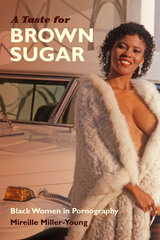 A Taste for Brown Sugar: Black Women in Pornography
Mireille Miller-Young
Duke University Press, 2014 A Taste for Brown Sugar boldly takes on representations of black women's sexuality in the porn industry. It is based on Mireille Miller-Young's extensive archival research and her interviews with dozens of women who have worked in the adult entertainment industry since the 1980s. The women share their thoughts about desire and eroticism, black women's sexuality and representation, and ambition and the need to make ends meet. Miller-Young documents their interventions into the complicated history of black women's sexuality, looking at individual choices, however small—a costume, a gesture, an improvised line—as small acts of resistance, of what she calls "illicit eroticism." Building on the work of other black feminist theorists, and contributing to the field of sex work studies, she seeks to expand discussion of black women's sexuality to include their eroticism and desires, as well as their participation and representation in the adult entertainment industry. Miller-Young wants the voices of black women sex workers heard, and the decisions they make, albeit often within material and industrial constraints, recognized as their own.
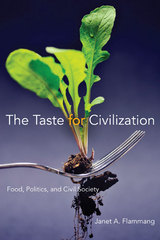 The Taste for Civilization: Food, Politics, and Civil Society
Janet A. Flammang
University of Illinois Press, 2009 This book explores the idea that table activities--the mealtime rituals of food preparation, serving, and dining--lay the foundation for a proper education on the value of civility, the importance of the common good, and what it means to be a good citizen. The arts of conversation and diplomatic speech are learned and practiced at tables, and a political history of food practices recasts thoughtfulness and generosity as virtues that enhance civil society and democracy. In our industrialized and profit-centered culture, however, foodwork is devalued and civility is eroding. Looking at the field of American civility, Janet A. Flammang addresses the gendered responsibilities for foodwork's civilizing functions and argues that any formulation of "civil society" must consider food practices and the household. To allow space for practicing civility, generosity, and thoughtfulness through everyday foodwork, Americans must challenge the norms of unbridled consumerism, work-life balance, and domesticity and caregiving. Connecting political theory with the quotidian activities of the dinner table, Flammang discusses practical ideas from the "delicious revolution" and Slow Food movement to illustrate how civic activities are linked to foodwork, and she points to farmers' markets and gardens in communities, schools, and jails as sites for strengthening civil society and degendering foodwork.
 A Taste for Language: Literacy, Class, and English Studies
James Ray Watkins Jr.
Southern Illinois University Press, 2009 “This is a book about the American Dream as it has become embodied in the university in general and in the English department in particular,” writes James Ray Watkins at the start of A Taste for Language: Literacy, Class, and English Studies. In it, Watkins argues that contemporary economic and political challenges require a clear understanding of the identity of English studies, making elementary questions about literacy, language, literature, education, and class once again imperative.
A personal history of university-level English studies in the twentieth century, A Taste for Language combines biography, autobiography, and critical analysis to explore the central role of freshman English and literary studies in the creation and maintenance of the middle class. It tells a multi-generational story of the author and his father, intertwined with close reading of texts and historical analysis. The story moves from depression-era Mississippi, where the author's father was born, to a contemporary English department, where the author now teaches.
Watkins looks at not only textbooks, scholars, and the academy but also at families and other social institutions. A rich combination of biography, autobiography, and critical analysis, A Taste for Language questions what purpose an education in English language and literature serves in the lives of the educated in a class-based society and whether English studies has become wholly irrelevant in the twenty-first century.
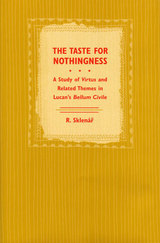 The Taste for Nothingness: A Study of Virtus and Related Themes in Lucan's Bellum Civile
R. Sklenar
University of Michigan Press, 2003 Lucan, the young and doomed epic poet of the Age of Nero, is represented by only one surviving work, the Bellum Civile, which takes as its theme the civil war that destroyed the Roman Republic. An epic unlike any other, it rejects point by point the aesthetics of Vergil's Aeneid and describes a society and a cosmos plunged into anarchy. Language was a casualty of this anarchy. All terminological certitudes were lost, including those that traditionally attach to the Latin word virtus: heroism on the battlefield, rectitude in the conduct of life.
The Taste for Nothingness traces Lucan's own analytical method by showing how virtus and related concepts operate--or rather, fail to operate--in Lucan's appropriations and distortions of the traditional epic-battle narrative; in the philosophical commitment of Cato the Younger; and in the personalities of the two antagonists, Pompey and Caesar. Much recent scholarship has reached a consensus that Lucan's literary method is mimetic, that his belief in a chaotic cosmos produces a poetics of chaos. While accepting many of the recent findings about Lucan's view of language and the universe, The Taste for Nothingness also allows an even bolder Lucan to emerge: a committed aesthete who regards art as the only realm in which order is possible.
Robert Sklenár is Visiting Assistant Professor of Classical Studies, Tulane University.
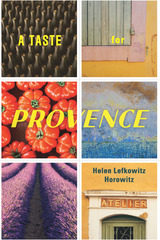 A Taste for Provence
Helen Lefkowitz Horowitz
University of Chicago Press, 2016 Provence today is a state of mind as much as a region of France, promising clear skies and bright sun, gentle breezes scented with lavender and wild herbs, scenery alternately bold and intricate, and delicious foods served alongside heady wines. Yet in the mid-twentieth century, a travel guide called the region a “mostly dry, scrubby, rocky, arid land.” How, then, did Provence become a land of desire—an alluring landscape for the American holiday?
In A Taste for Provence, historian Helen Lefkowitz Horowitz digs into this question and spins a wonderfully appealing tale of how Provence became Provence. The region had previously been regarded as a backwater and known only for its Roman ruins, but in the postwar era authors, chefs, food writers, visual artists, purveyors of goods, and travel magazines crafted a new, alluring image for Provence. Soon, the travel industry learned that there were many ways to roam—and some even involved sitting still. The promise of longer stays where one cooked fresh food from storied outdoor markets became desirable as American travelers sought new tastes and unadulterated ingredients.
Even as she revels in its atmospheric, cultural, and culinary attractions, Horowitz demystifies Provence and the perpetuation of its image today. Guiding readers through books, magazines, and cookbooks, she takes us on a tour of Provence pitched as a new Eden, and she dives into the records of a wide range of visual media—paintings, photographs, television, and film—demonstrating what fueled American enthusiasm for the region. Beginning in the 1970s, Provence—for a summer, a month, or even just a week or two—became a dream for many Americans. Even today as a road well traveled, Provence continues to enchant travelers, armchair and actual alike.
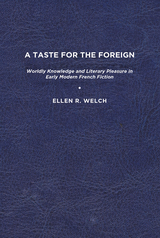 A Taste for the Foreign: Worldly Knowledge and Literary Pleasure in Early Modern French Fiction
Ellen R. Welch
University of Delaware Press, 2011 A Taste for the Foreign examines foreignness as a crucial aesthetic category for the development of prose fiction from Jacques Amyot’s 1547 translation of The Ethiopian Story to Antoine Galland’s early eighteenth-century version of The Thousand and One Nights. While fantastic storylines and elements of magic were increasingly shunned by a neo-classicist literary culture that valued verisimilitude above all else, writers and critics surmised that the depiction of exotic lands could offer a superior source for the novelty, variety, and marvelousness that constituted fiction’s appeal. In this sense, early modern fiction presents itself as privileged site for thinking through the literary and cultural stakes of exoticism, or the taste for the foreign. Long before the term exoticism came into common parlance in France, fiction writers thus demonstrated their understanding of the special kinds of aesthetic pleasure produced by evocations of foreignness, developing techniques to simulate those delights through imitations of the exotic. As early modern readers eagerly consumed travel narratives, maps, and international newsletters, novelists discovered ways to blur the distinction between true and imaginary representations of the foreign, tantalizing readers with an illusion of learning about the faraway lands that captured their imaginations. This book analyzes the creative appropriations of those scientific or documentary forms of writing that claimed to inform the French public about exotic places. Concentrating on the most successful examples of some of the most important sub-genres of prose fiction in the long seventeenth century—heroic romances, shorter urban novels, fictional memoirs, and extraordinary voyages—the book examines how these types of fiction creatively appropriate the scientific or documentary forms of writing that claimed to inform the French public about exotic places. Published by University of Delaware Press. Distributed worldwide by Rutgers University Press.
 The Taste of America
John L. Hess and Karen Hess
University of Illinois Press, 1972 This classic barbeque of our foodways is as valid and as savory today as when it first tickled ribs a generation ago. Based on the superlative authority of John L. Hess, onetime food critic of the New York Times, and Karen Hess, the pioneering historian of cookery, The Taste of America is both a history of American cooking and a history of the advice smiling celebrity cooks have asked Americans to swallow.
The Taste of America provoked the cooking experts of the 1970s into spitting rage by pointing out in embarrassing detail that most of them lacked an essential ingredient: expertise. Now "Kool-Aid like Mother used to make" has become "Kool-Aid like Grandmother used to make," and a new generation has been weaned on synthetic food, pathetic snobbery, neurotic health advice, and reconstituted history.
This much-needed new edition chars Julia Child ("She's not a cook, but she plays one on TV"), chides food maven Ruth Reichl, and marvels at a convention of food technologists (whose program bore the slogan "Eat your heart out, Mother Nature"). Delectable reading for consumers, reformers, and scholars, this twenty-fifth anniversary reissue of The Taste of America will serve well into the new millennium.
A Taste of Ancient Rome
Ilaria Gozzini Giacosa
University of Chicago Press, 1992 From appetizers to desserts, the rustic to the refined, here are more than two hundred recipes from ancient Rome tested and updated for today's tastes. With its intriguing sweet-sour flavor combinations, its lavish use of fresh herbs and fragrant spices, and its base in whole grains and fruits and vegetables, the cuisine of Rome will be a revelation to serious cooks ready to create new dishes in the spirit of an ancient culture.
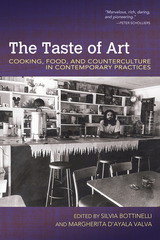 The Taste of Art: Cooking, Food, and Counterculture in Contemporary Practices
Silvia Bottinelli
University of Arkansas Press, 2017 The Taste of Art offers a sample of scholarly essays that examine the role of food in Western contemporary art practices. The contributors are scholars from a range of disciplines, including art history, philosophy, film studies, and history. As a whole, the volume illustrates how artists engage with food as matter and process in order to explore alternative aesthetic strategies and indicate countercultural shifts in society. The collection opens by exploring the theoretical intersections of art and food, food art’s historical root in Futurism, and the ways in which food carries gendered meaning in popular film. Subsequent sections analyze the ways in which artists challenge mainstream ideas through food in a variety of scenarios. Beginning from a focus on the body and subjectivity, the authors zoom out to look at the domestic sphere, and finally the public sphere. Here are essays that study a range of artists including, among others, Filippo Tommaso Marinetti, Daniel Spoerri, Dieter Roth, Joseph Beuys, Al Ruppersberg, Alison Knowles, Martha Rosler, Robin Weltsch, Vicki Hodgetts, Paul McCarthy, Luciano Fabro, Carries Mae Weems, Peter Fischli and David Weiss, Janine Antoni, Elżbieta Jabłońska, Liza Lou, Tom Marioni, Rirkrit Tiravanija, Michael Rakowitz, and Natalie Jeremijenko.
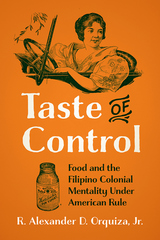 Taste of Control: Food and the Filipino Colonial Mentality under American Rule
R. Alexander D. Orquiza, Jr.
Rutgers University Press, 2020 Winner of the 2021 Gourmand Awards, Asian Section & Culinary History Section
Filipino cuisine is a delicious fusion of foreign influences, adopted and transformed into its own unique flavor. But to the Americans who came to colonize the islands in the 1890s, it was considered inferior and lacking in nutrition. Changing the food of the Philippines was part of a war on culture led by Americans as they attempted to shape the islands into a reflection of their home country. Taste of Control tells what happened when American colonizers began to influence what Filipinos ate, how they cooked, and how they perceived their national cuisine. Food historian René Alexander D. Orquiza, Jr. turns to a variety of rare archival sources to track these changing attitudes, including the letters written by American soldiers, the cosmopolitan menus prepared by Manila restaurants, and the textbooks used in local home economics classes. He also uncovers pockets of resistance to the colonial project, as Filipino cookbooks provided a defense of the nation’s traditional cuisine and culture. Through the topic of food, Taste of Control explores how, despite lasting less than fifty years, the American colonial occupation of the Philippines left psychological scars that have not yet completely healed, leading many Filipinos to believe that their traditional cooking practices, crops, and tastes were inferior. We are what we eat, and this book reveals how food culture served as a battleground over Filipino identity.
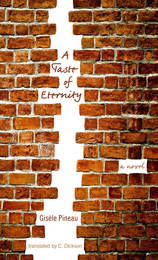 A Taste of Eternity: A Novel
Gisèle Pineau
Texas Tech University Press, 2014 Two women, separate but bound by hope
When Sybille arrives in Paris from Guadeloupe with her infant son, she encounters the extravagant and marvelous Lila. Sybille is young and black with her life still ahead of her; an ex-actress, Lila is white and seventy years old. Despite their differences, the women become inseparable.
Haunted by memories, Lila confides in Sybille and, among other things, relates the endless cycle of lovers in her life. Her most cherished memories are of Henry, a black man from the British Caribbean whom she met during the Liberation Day celebrations in Paris. Gradually, Sybille and Lila discover that the West Indies and the charm of Guadeloupe create a deep and common bond between them.
The narrative leaps from one side of the Atlantic to the other, playing black against white, past against present, rural Caribbean culture against the urban life of Paris and New York. Sybille’s memories of her own tragic childhood form a counterpoint to tales of Henry growing up on the island of St. John. The stories contain mysterious and magical elements revolving around one central theme: how fate works to draw lovers apart.
Despite repeated defeats, love still survives. In tales and in legends, mocking all obstacles, it circumvents the game of destiny and the tragic vanity of mankind.
|
|
